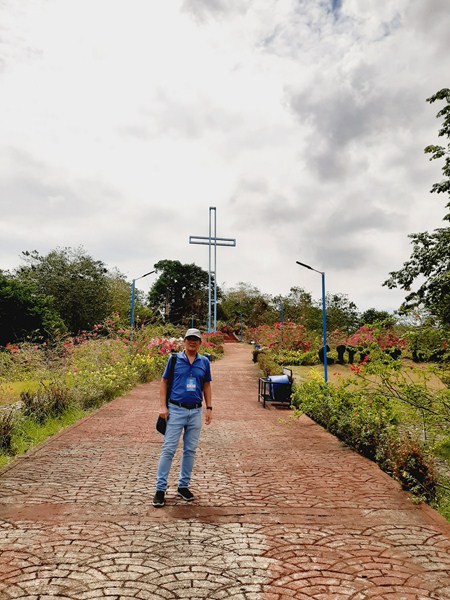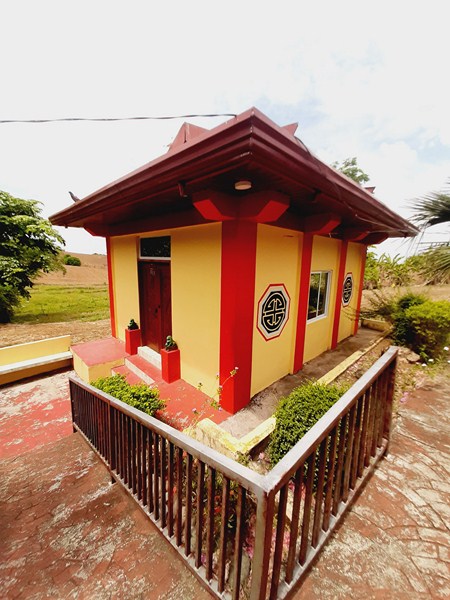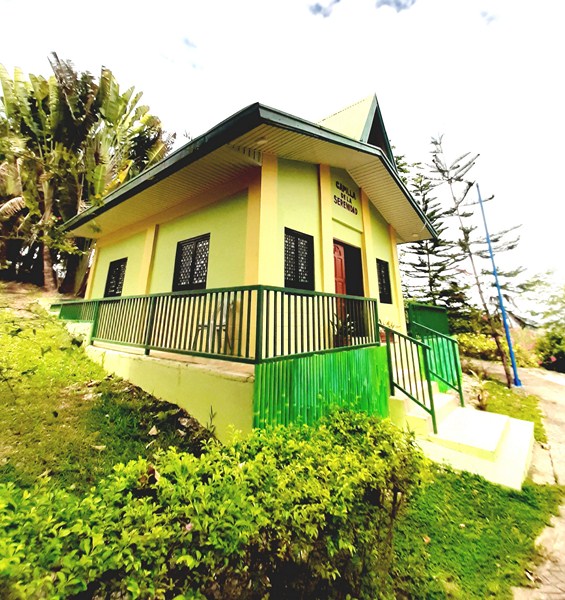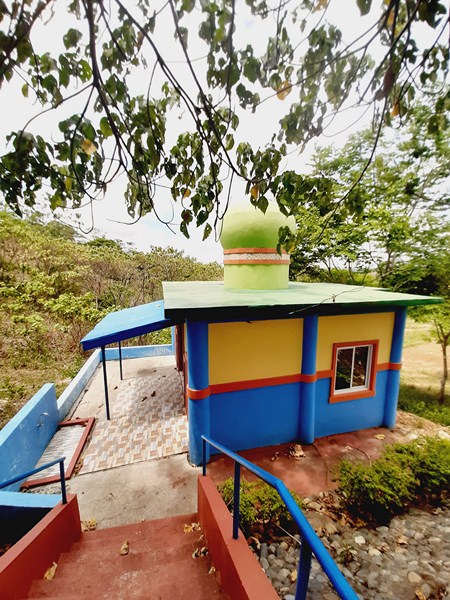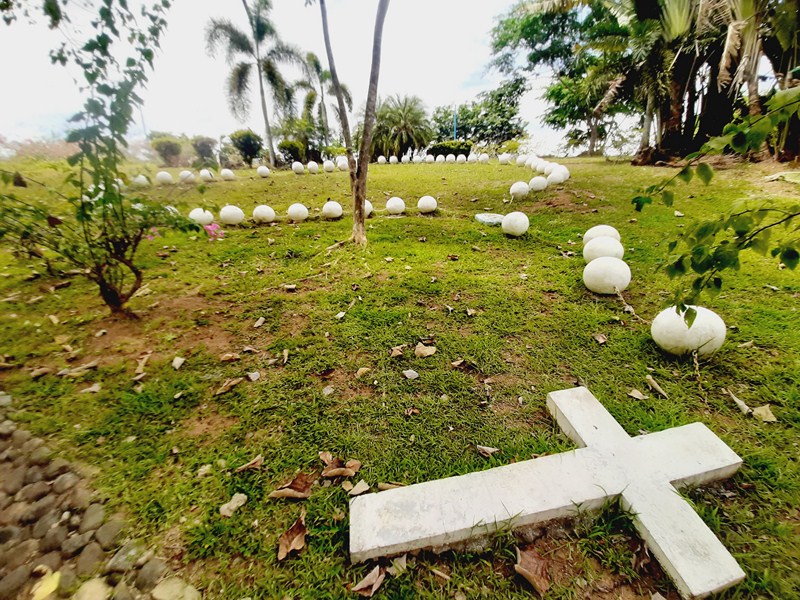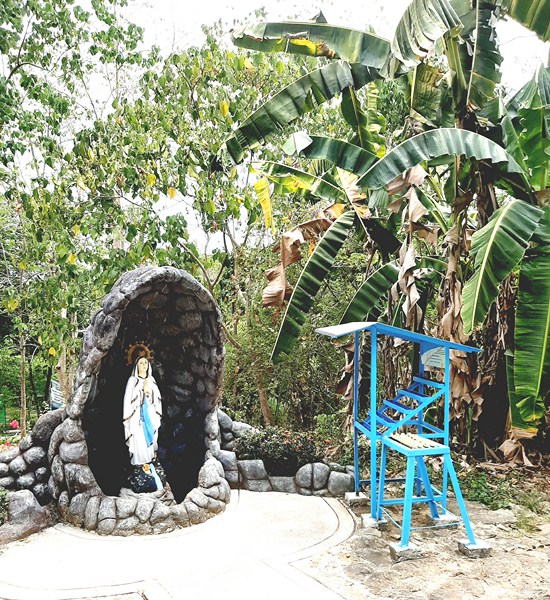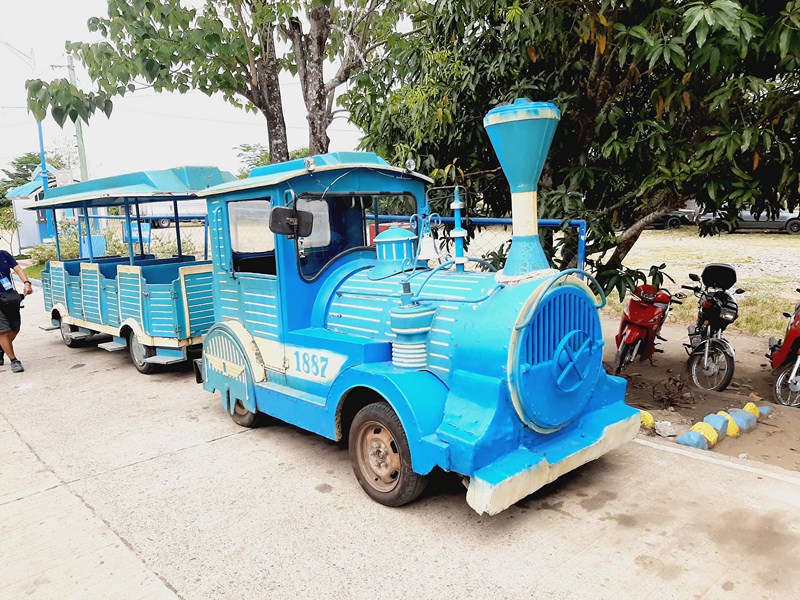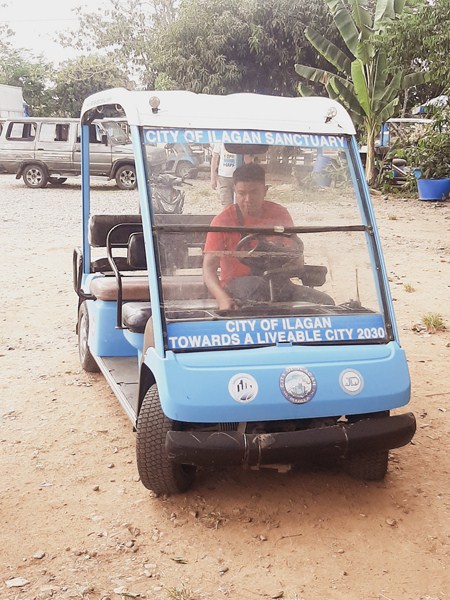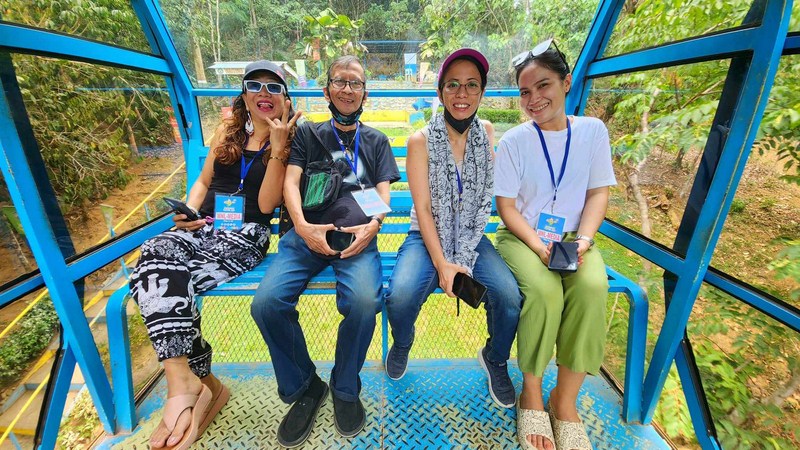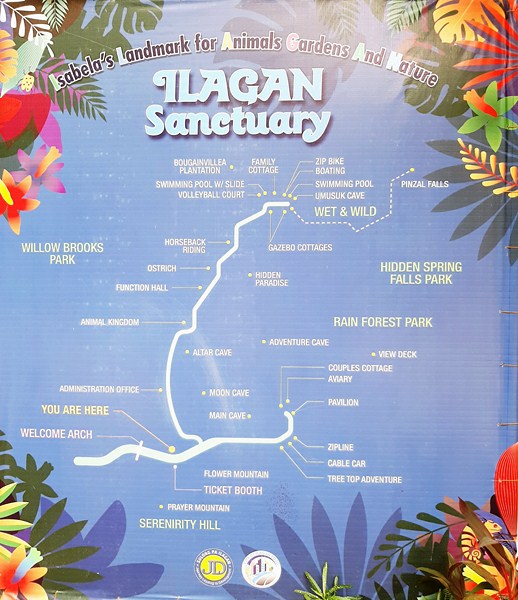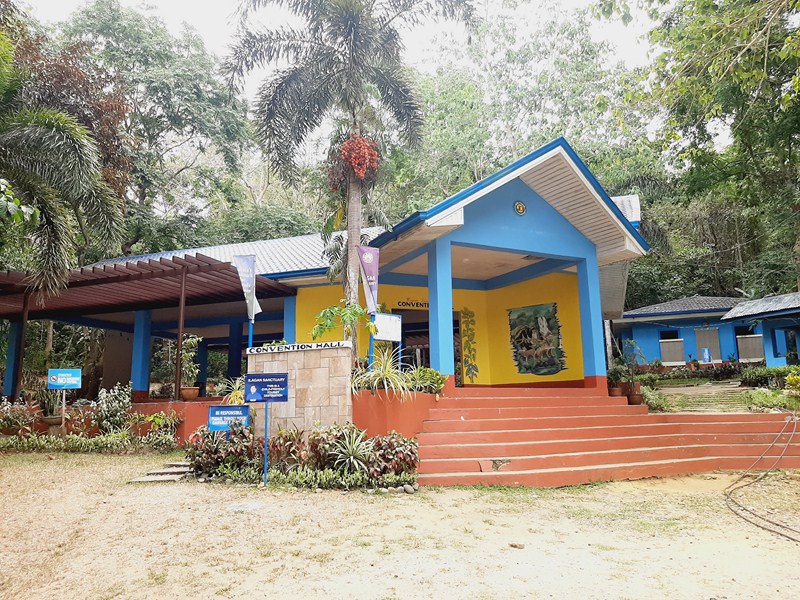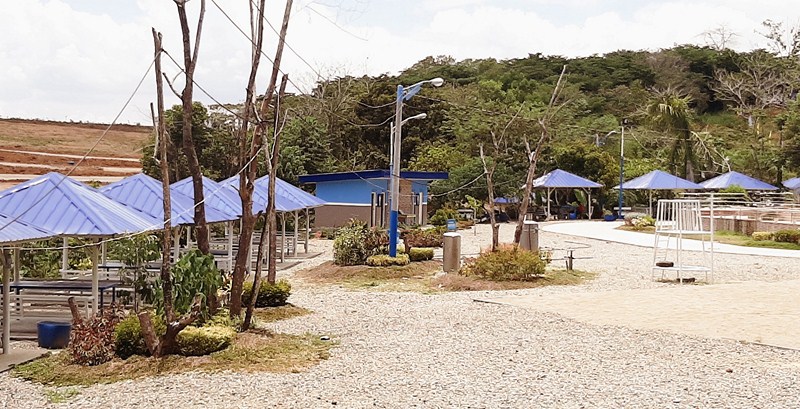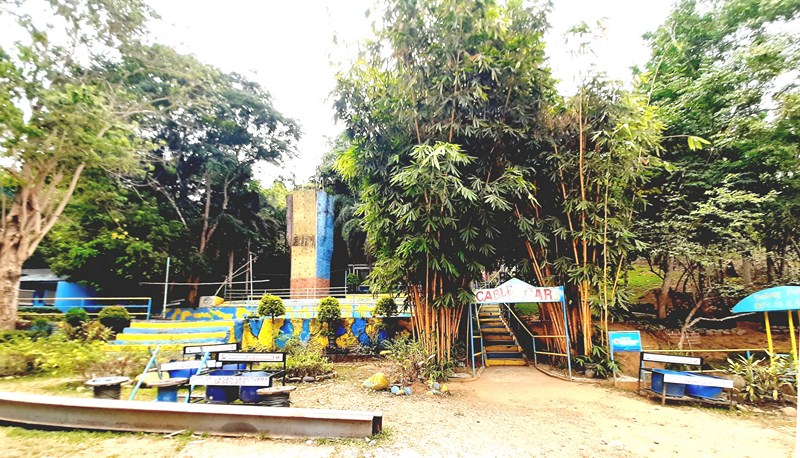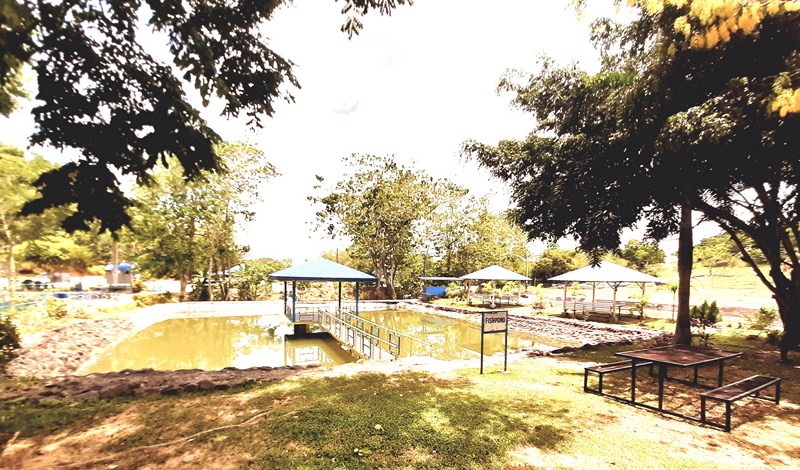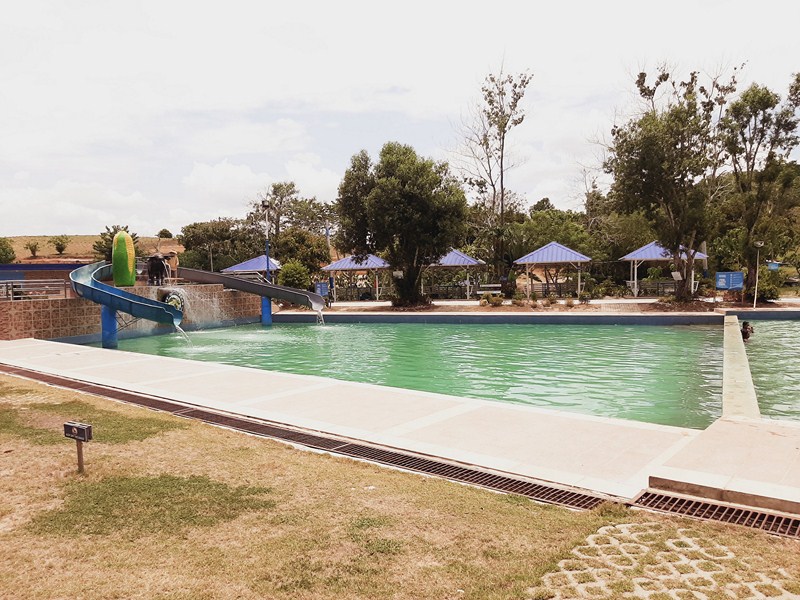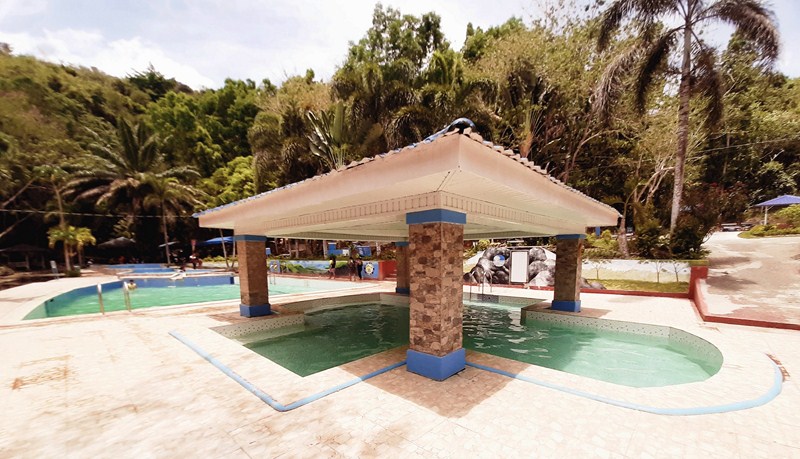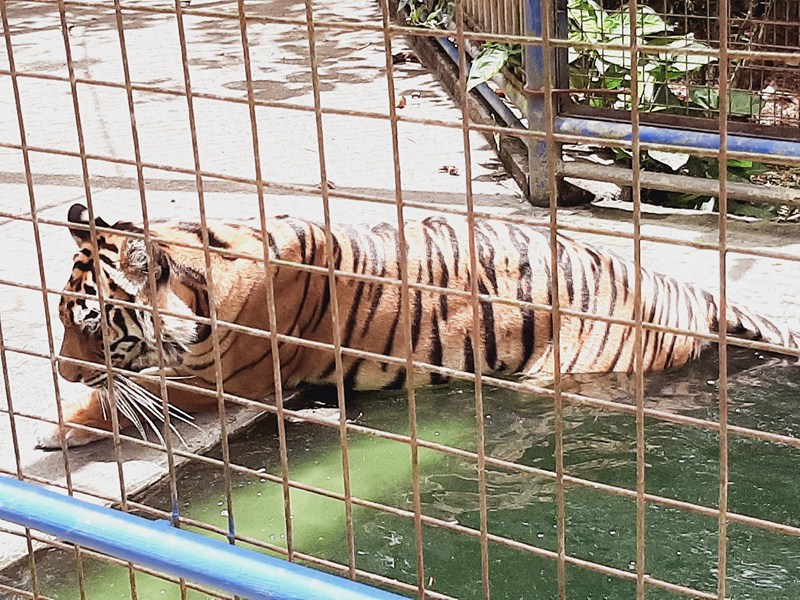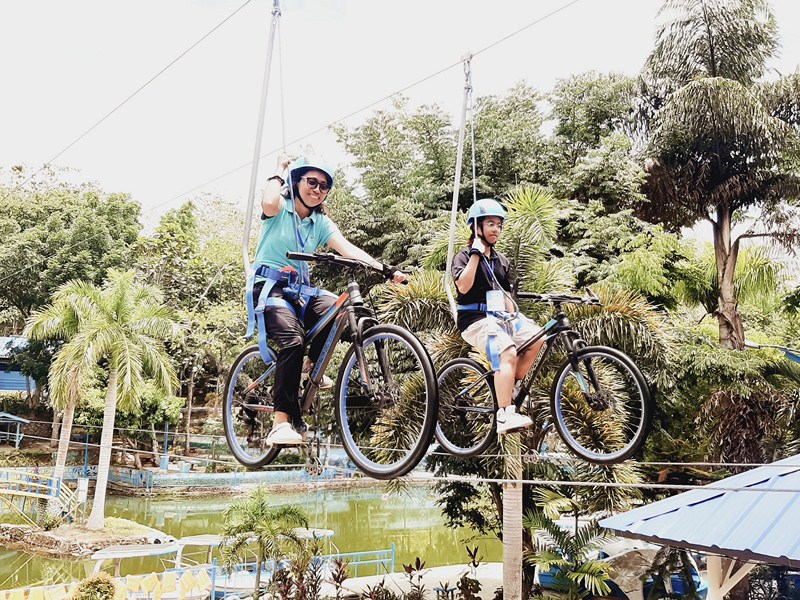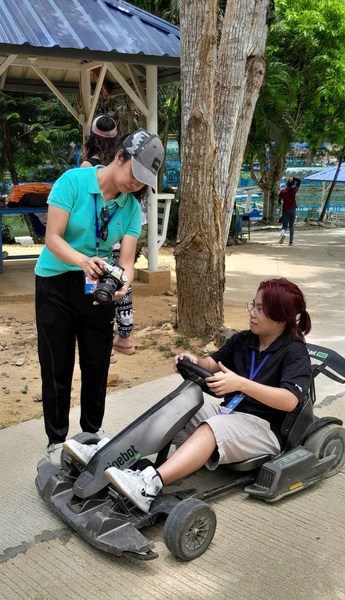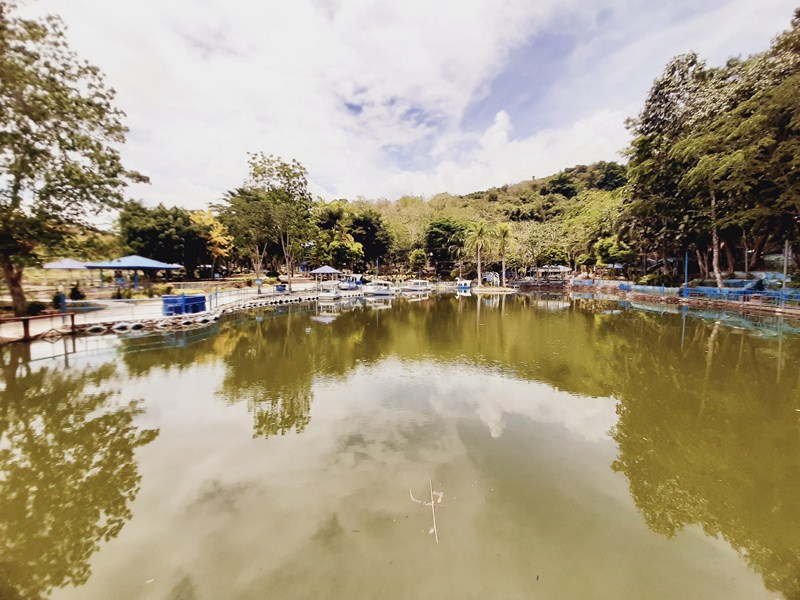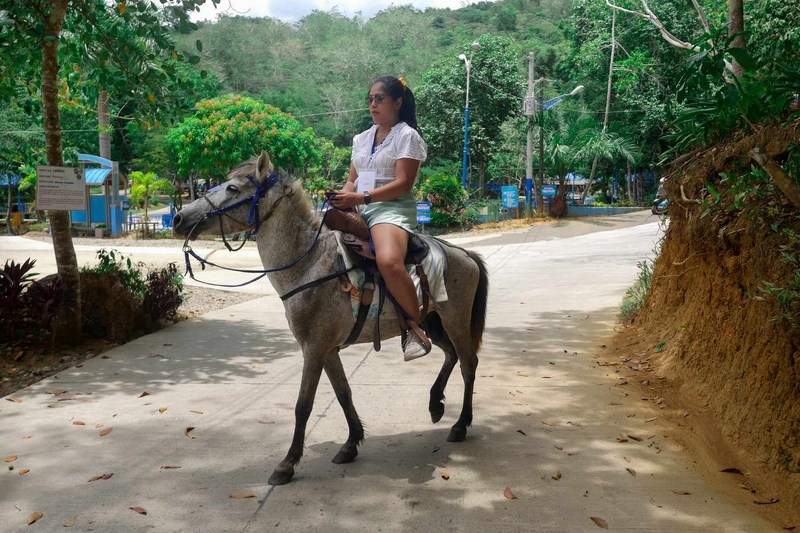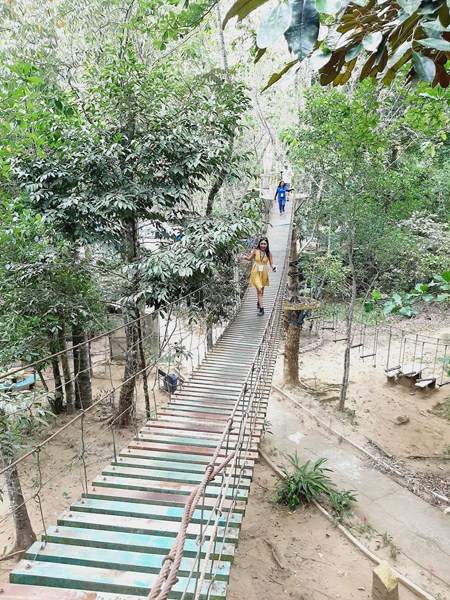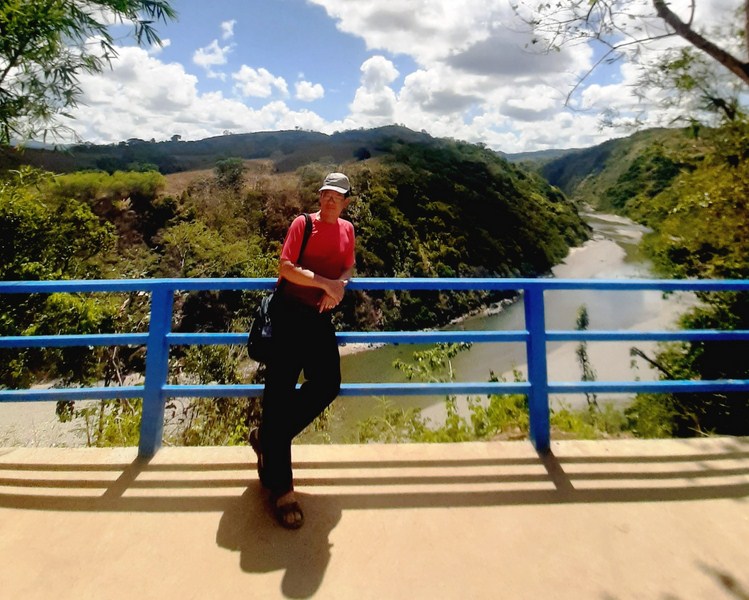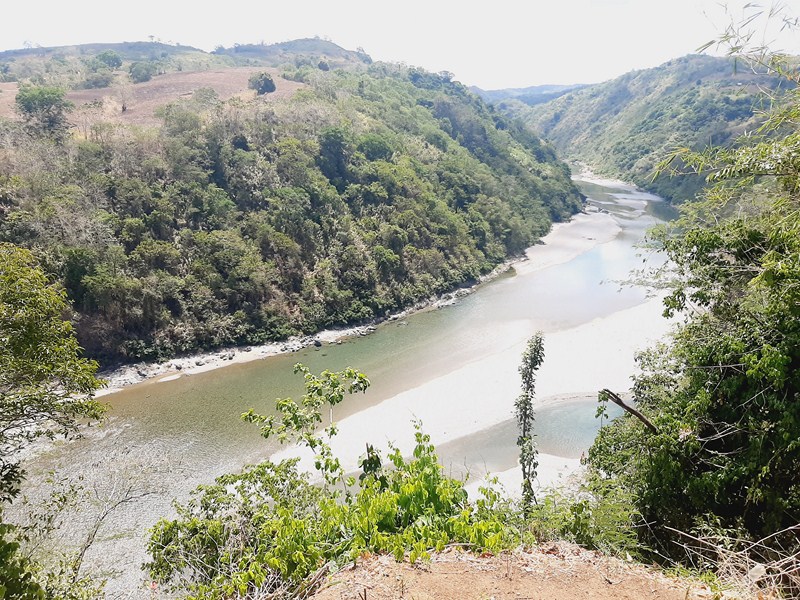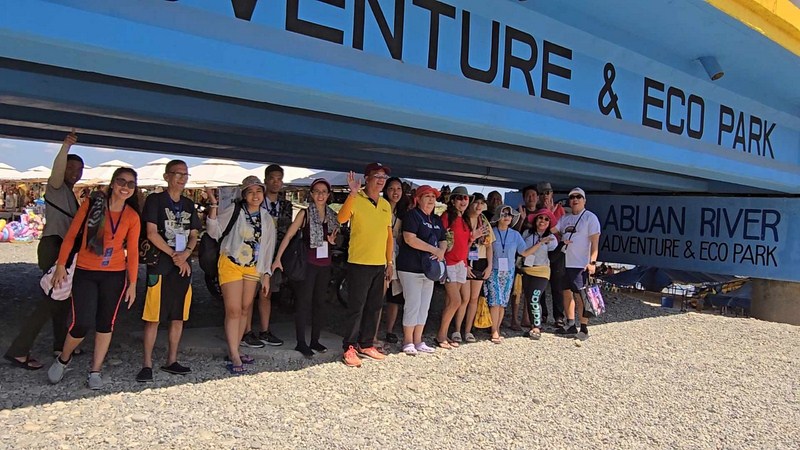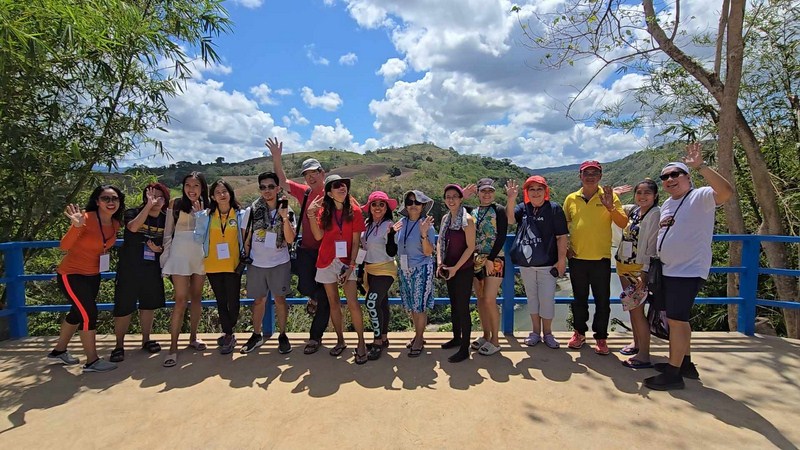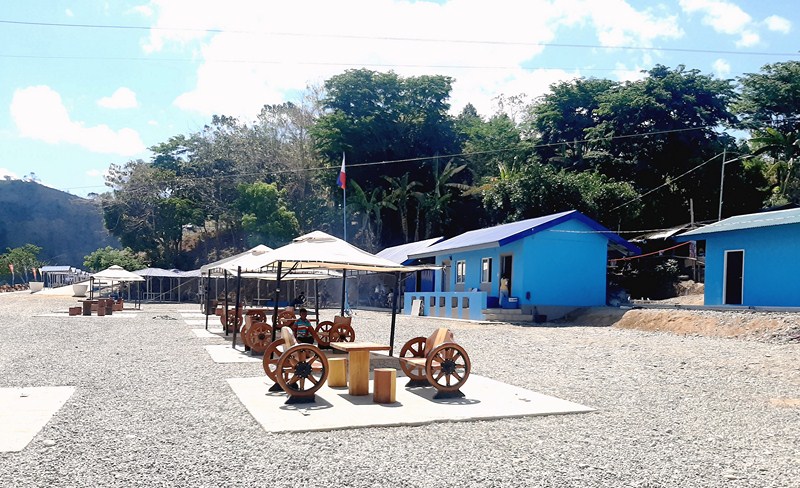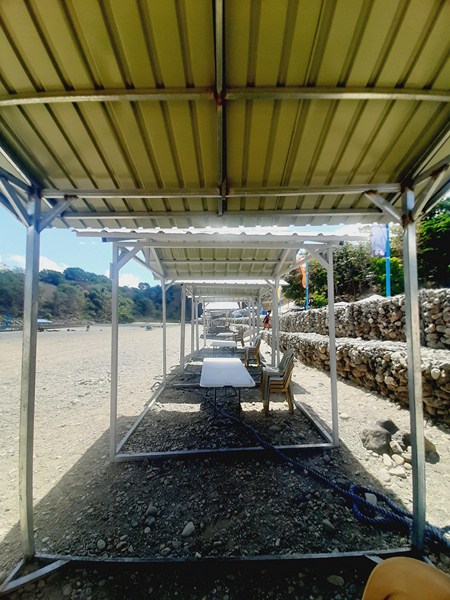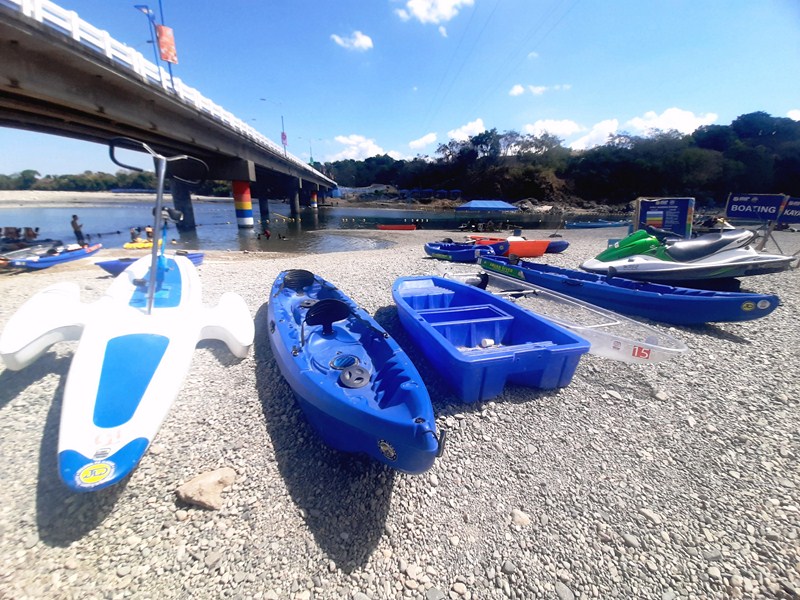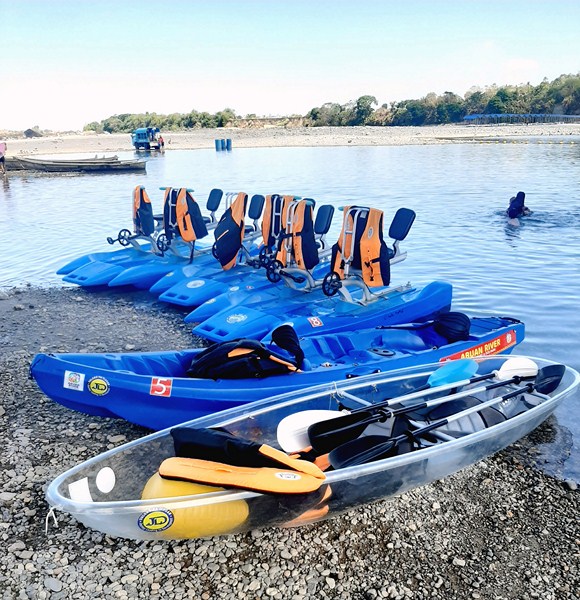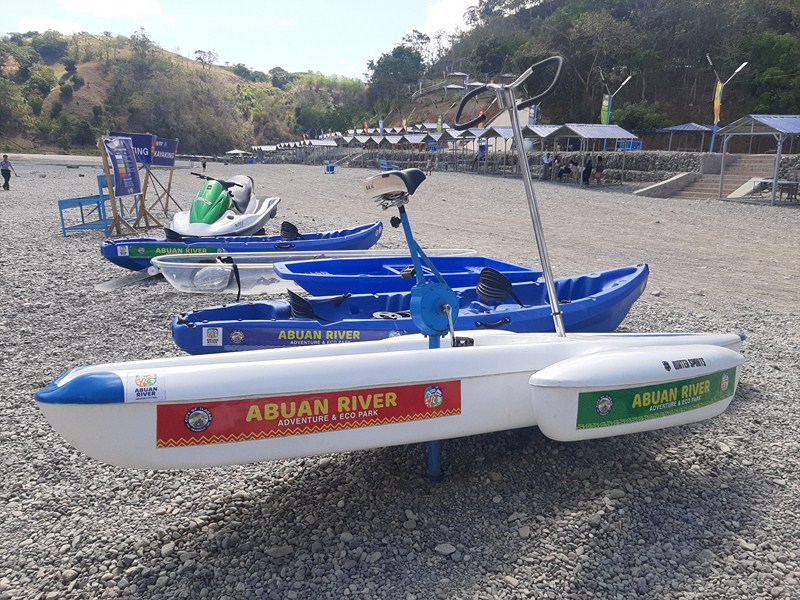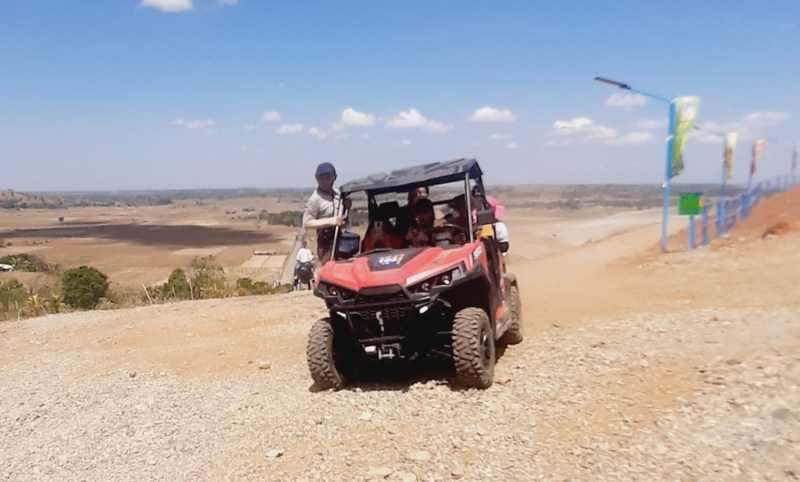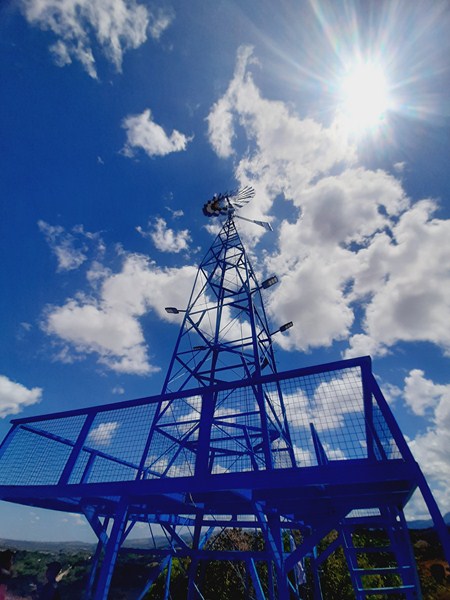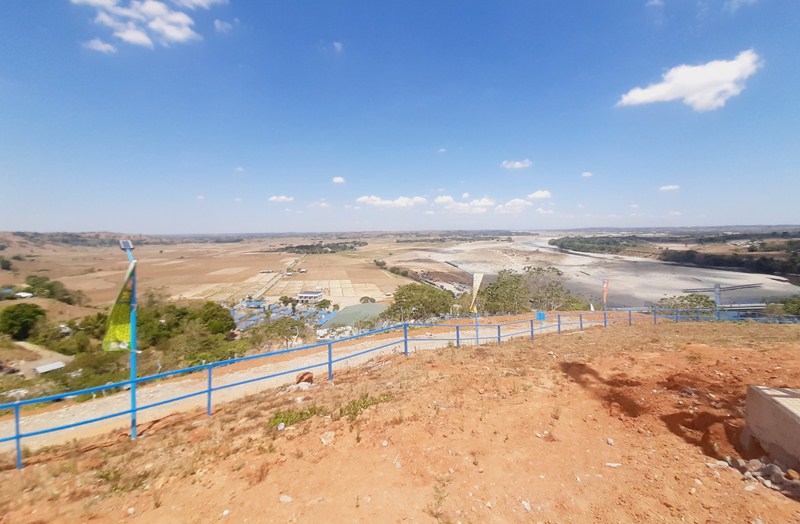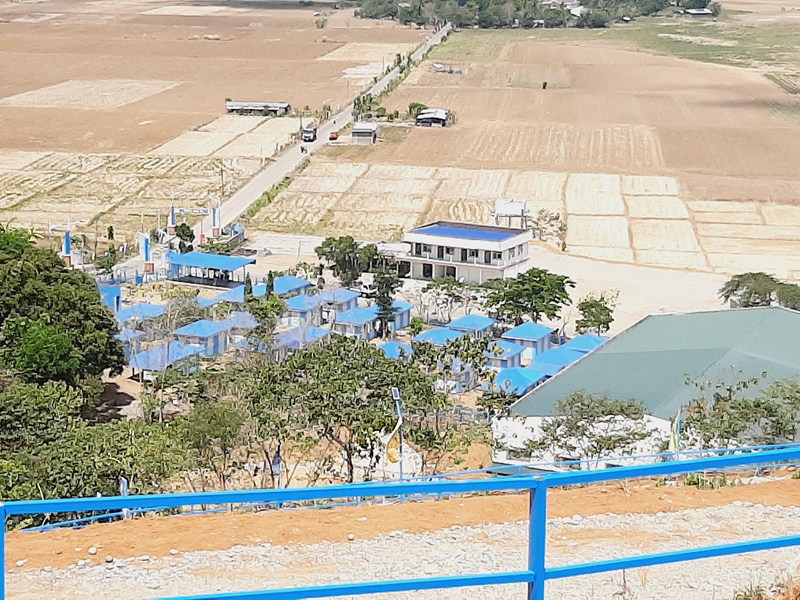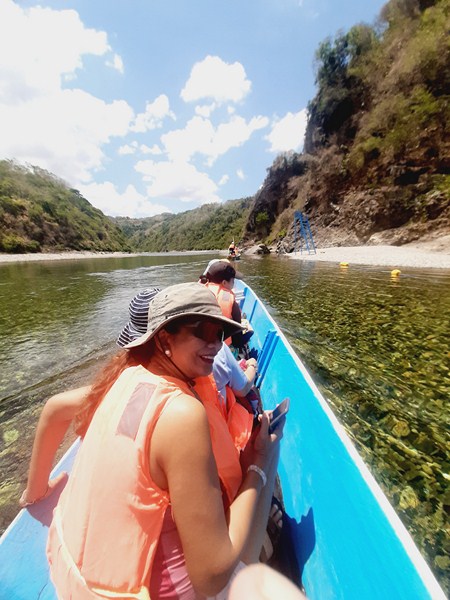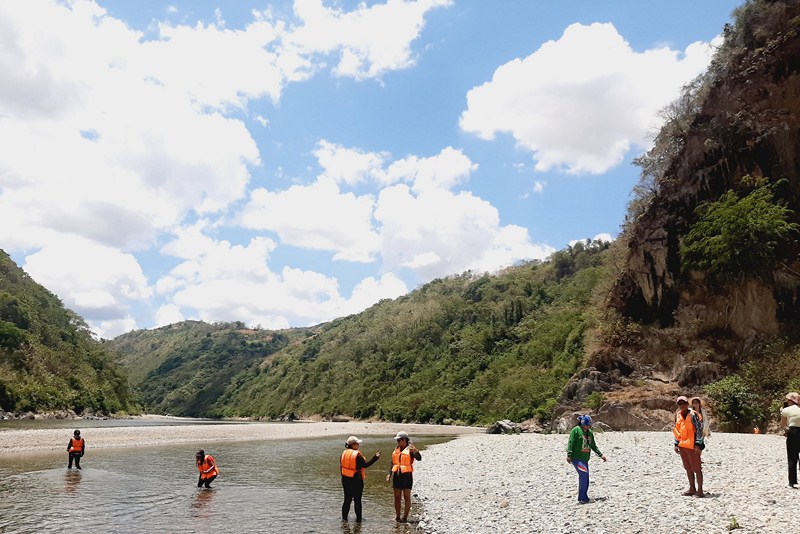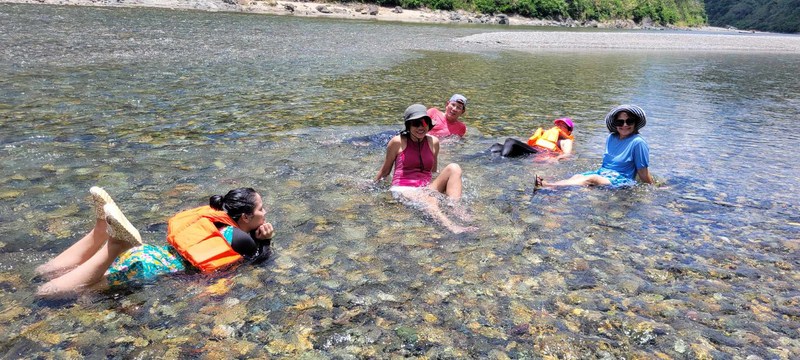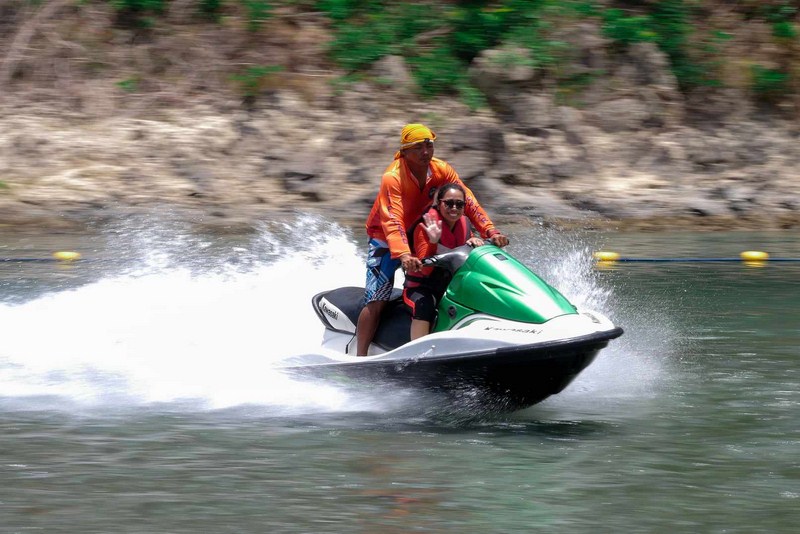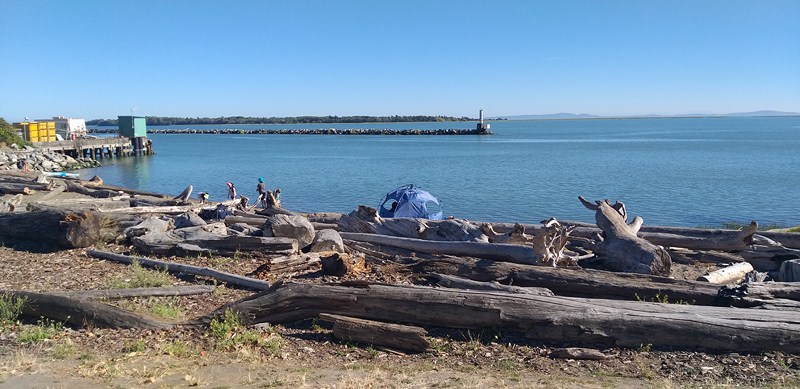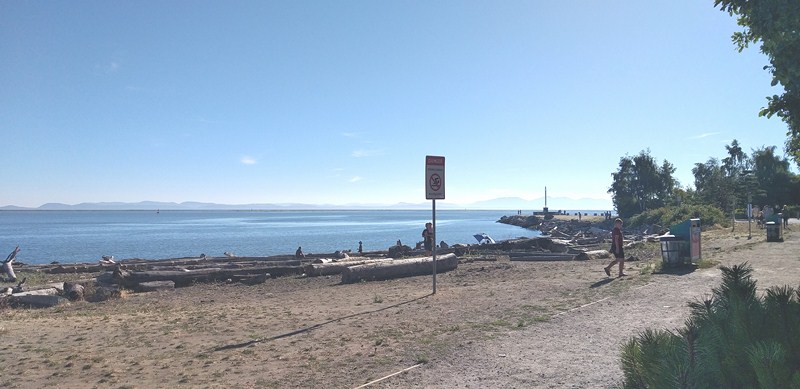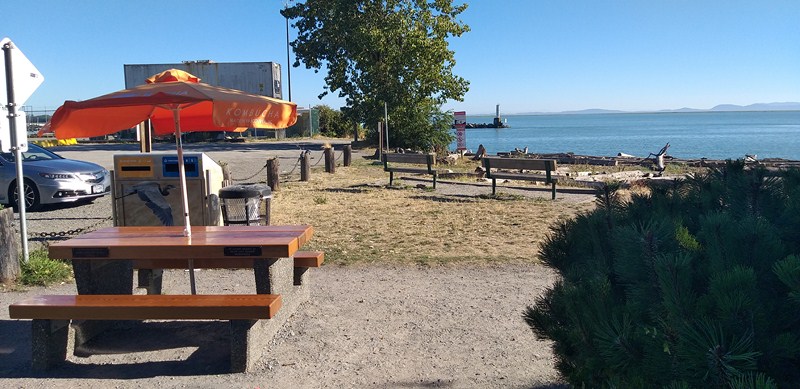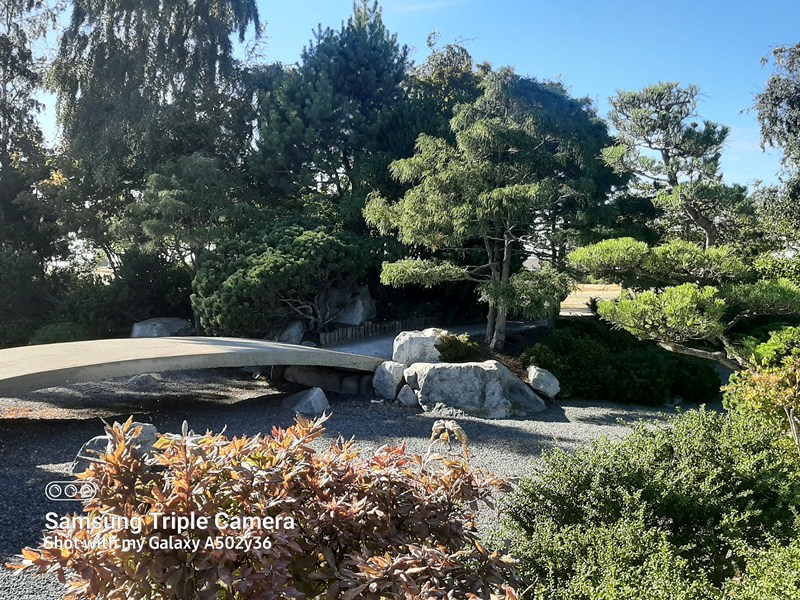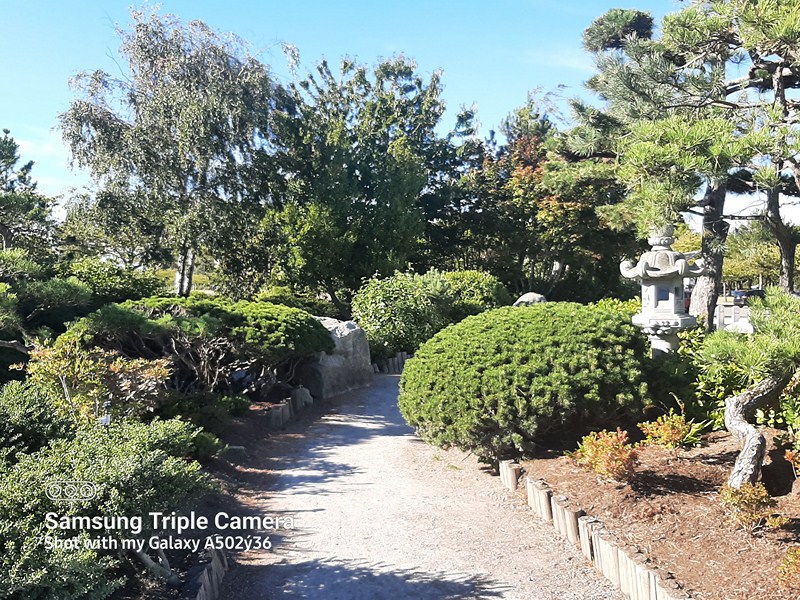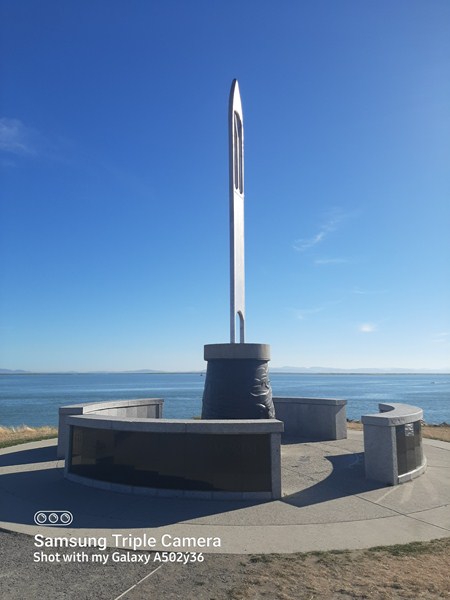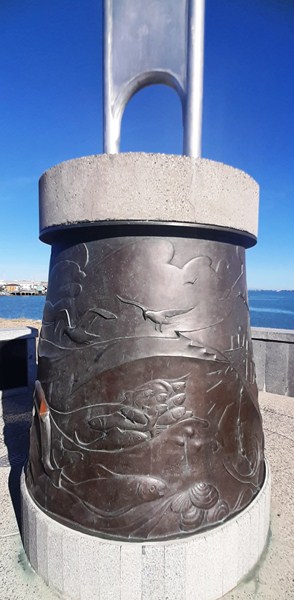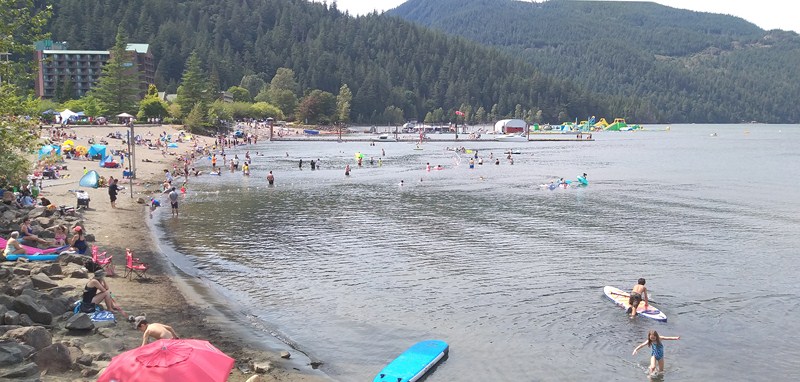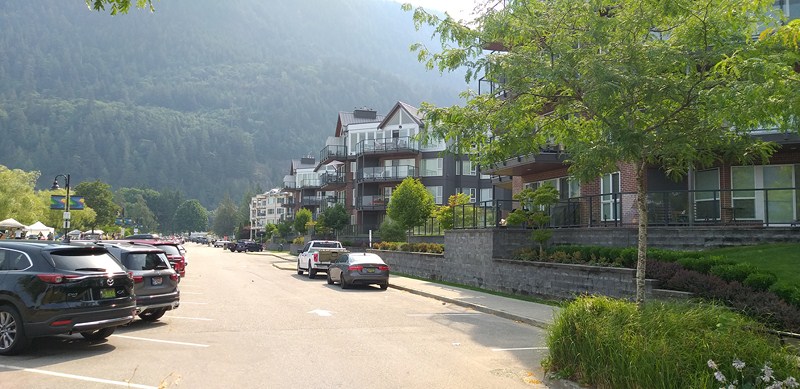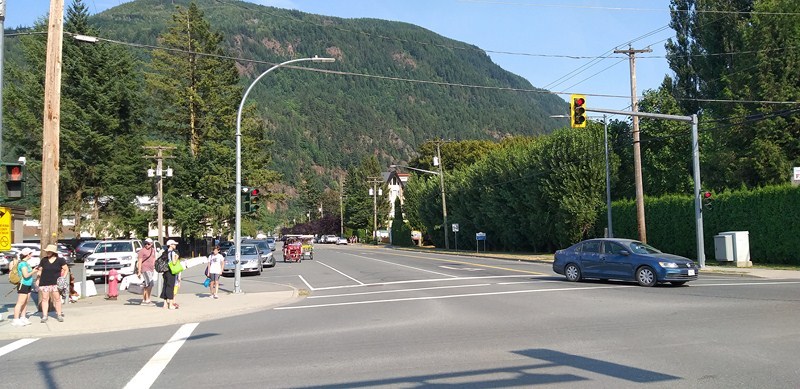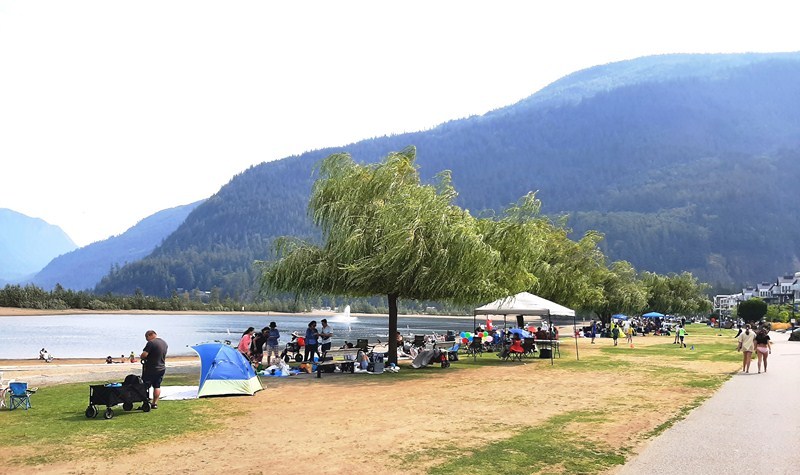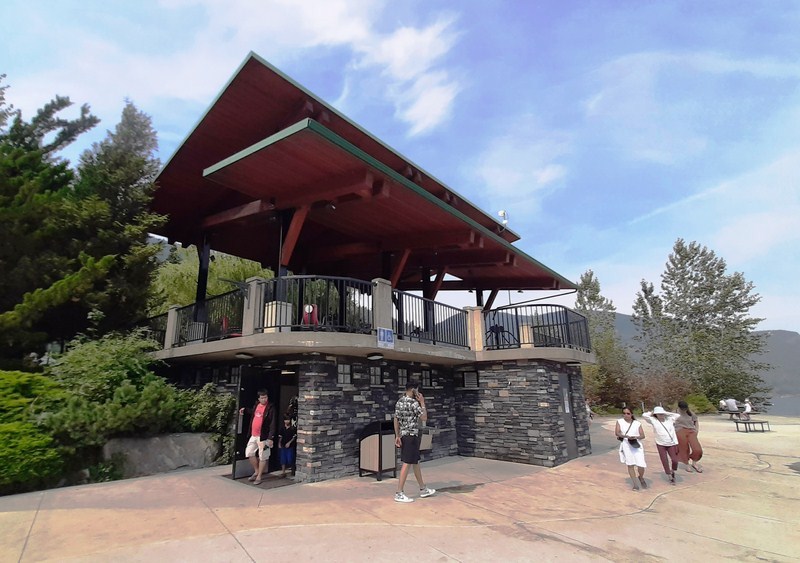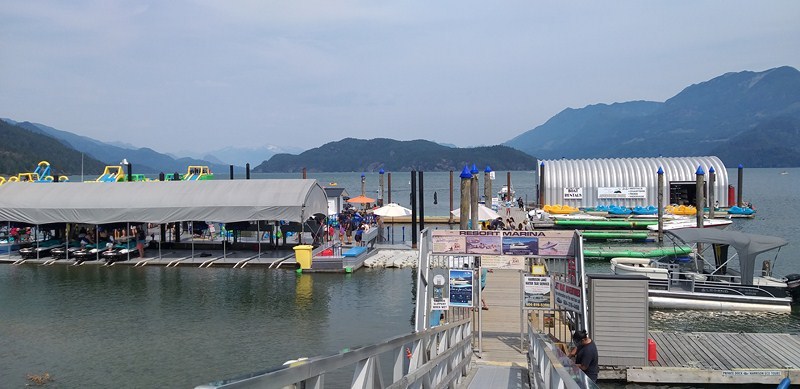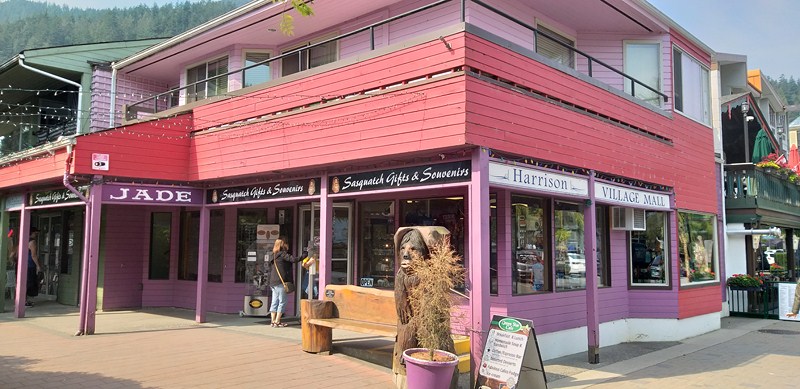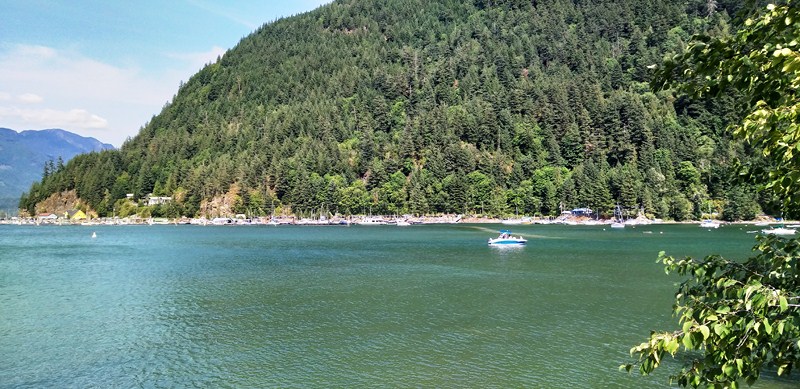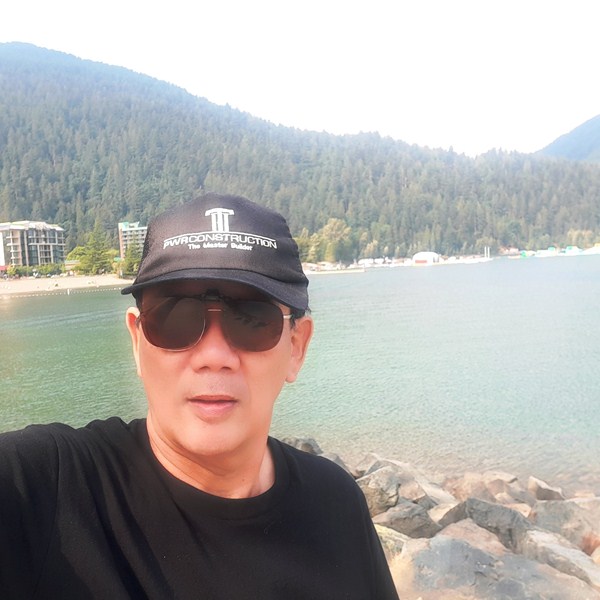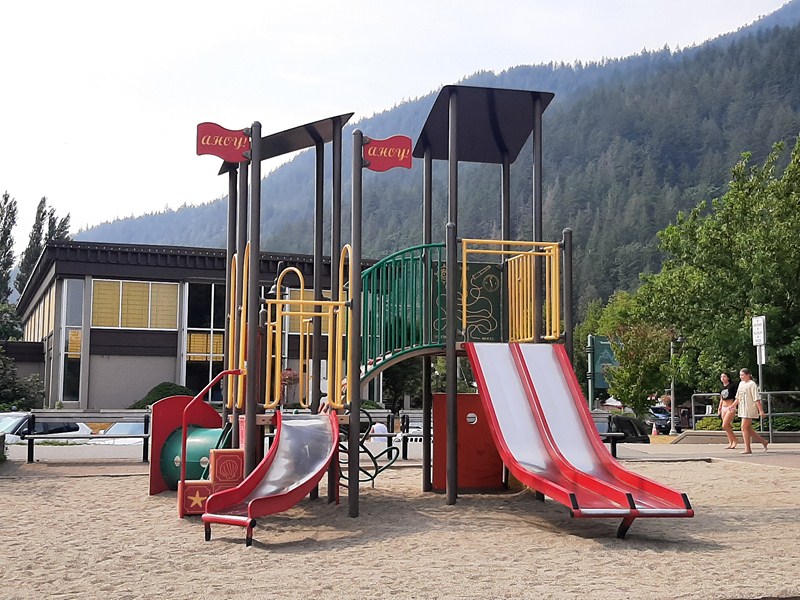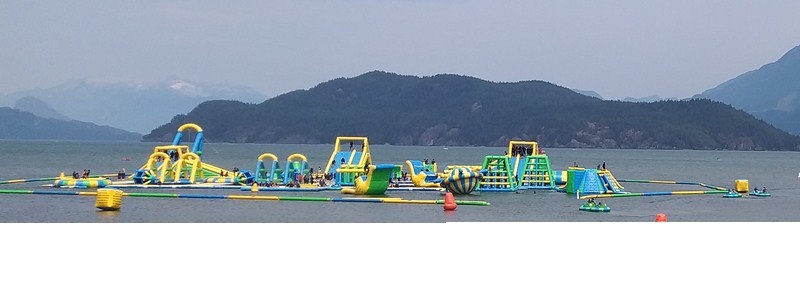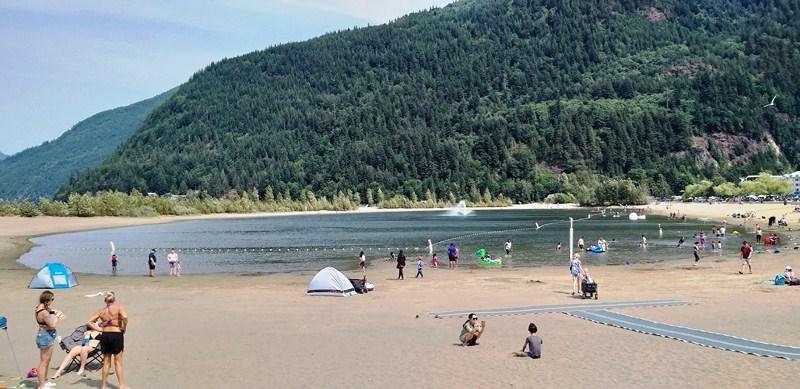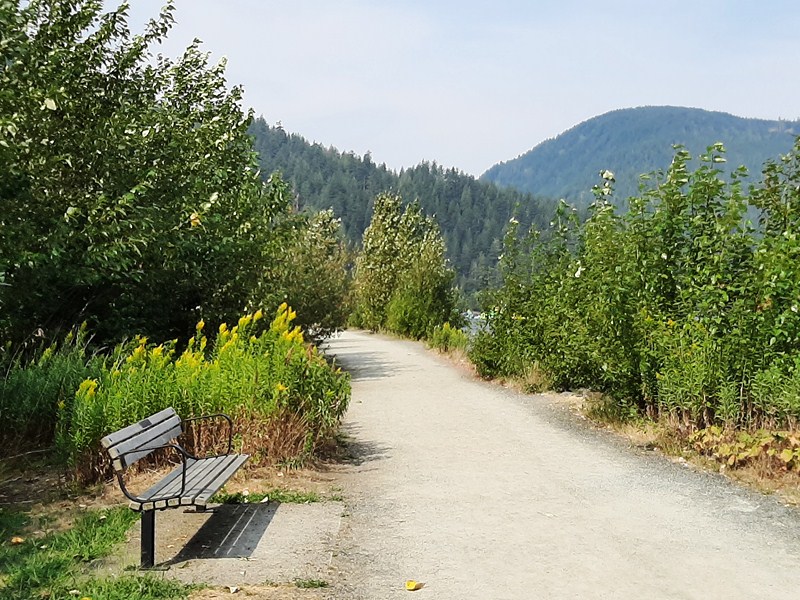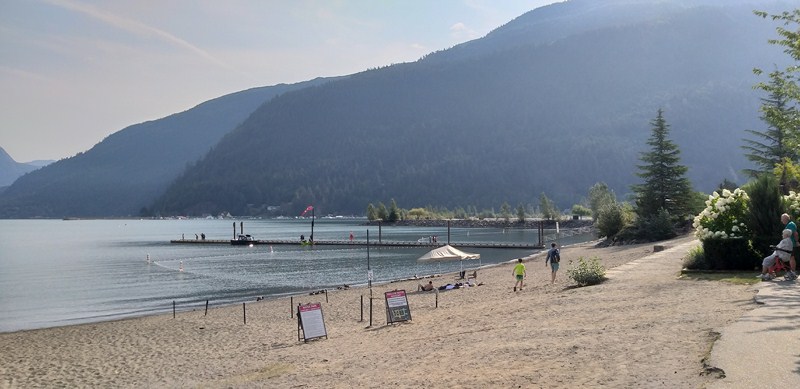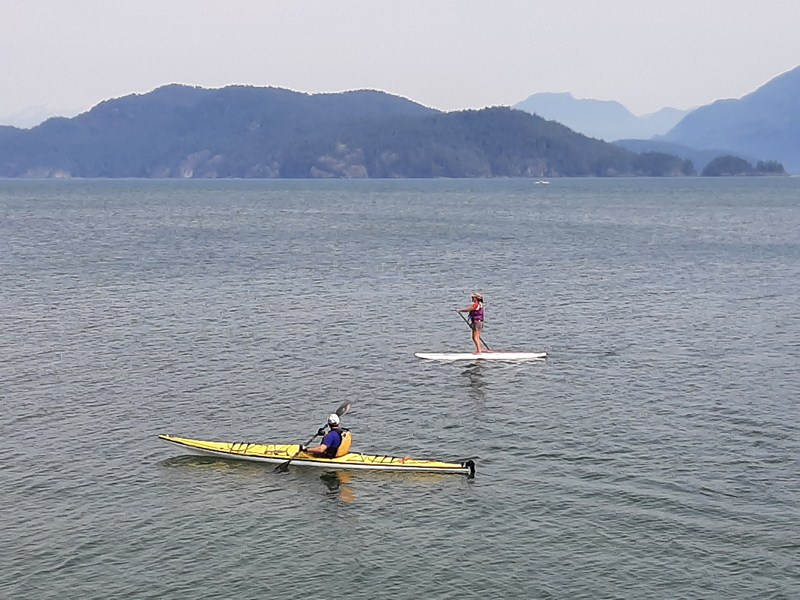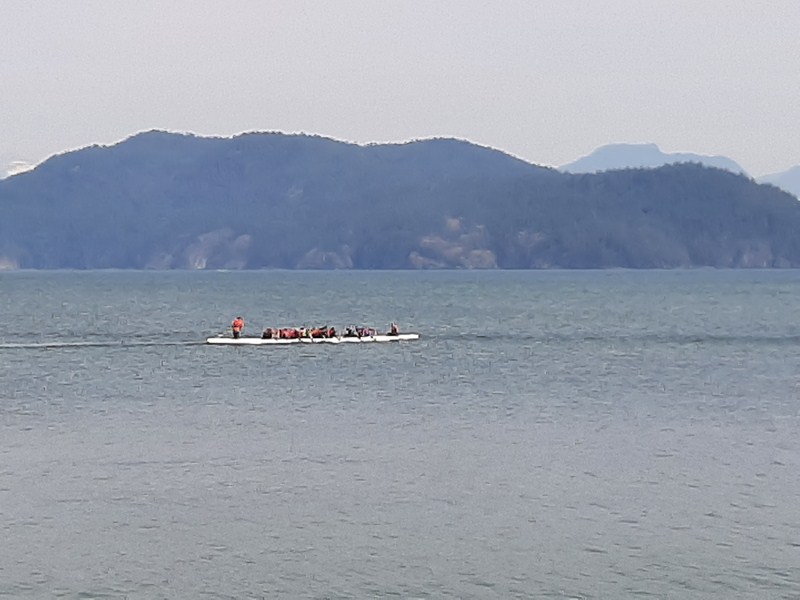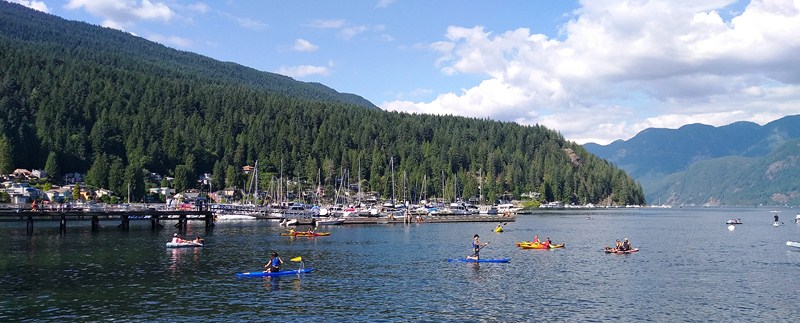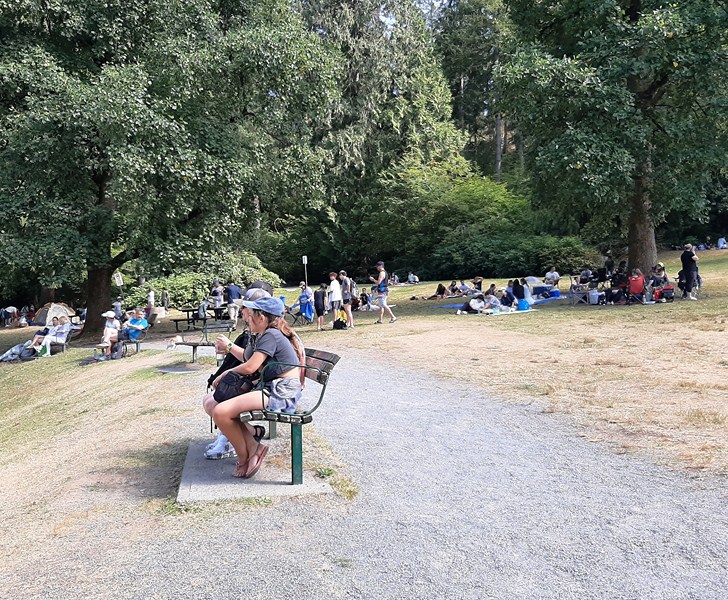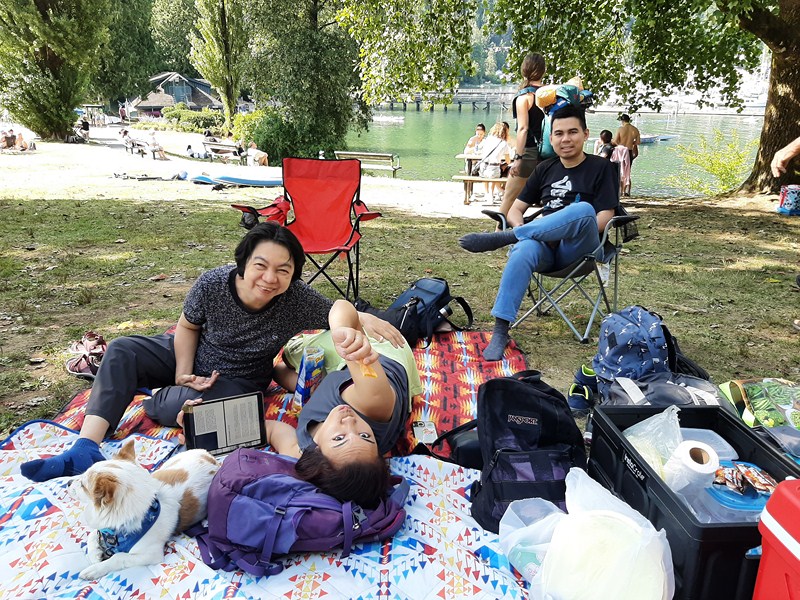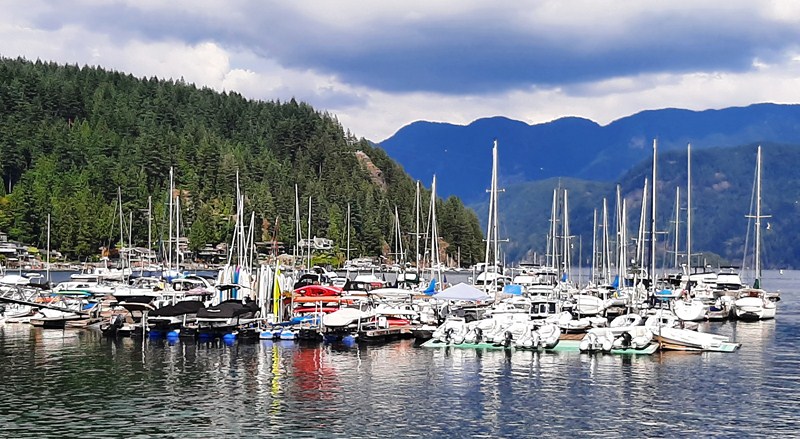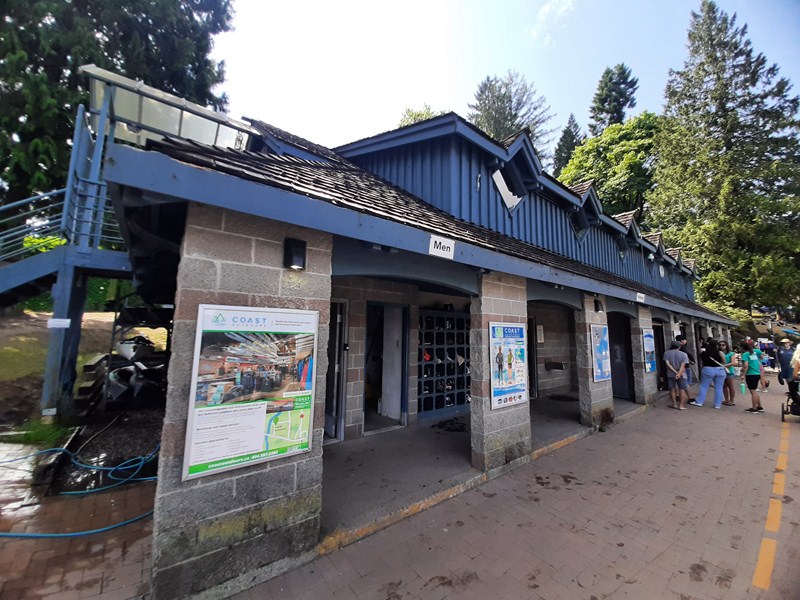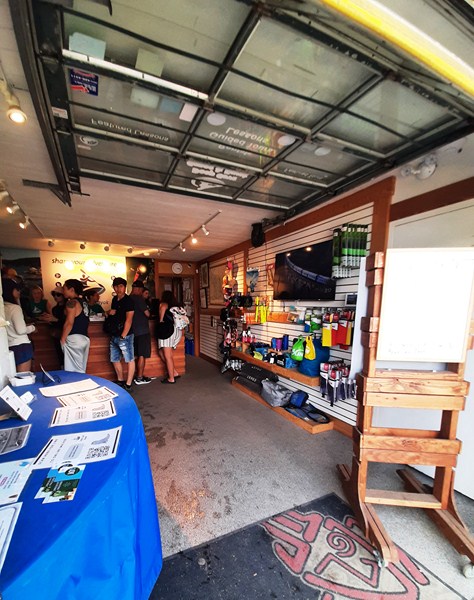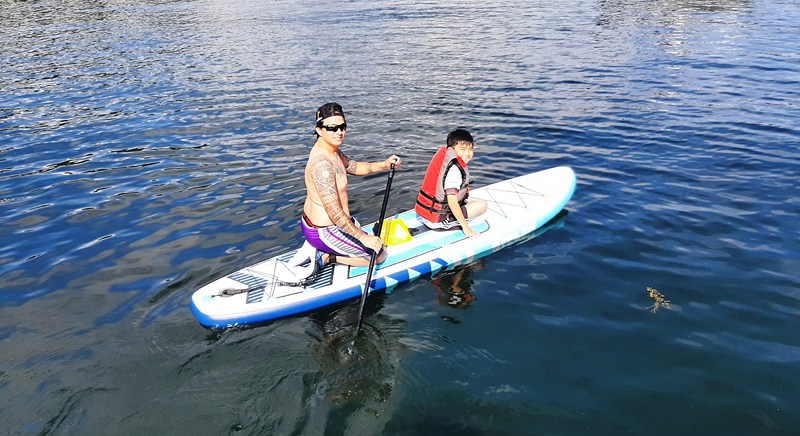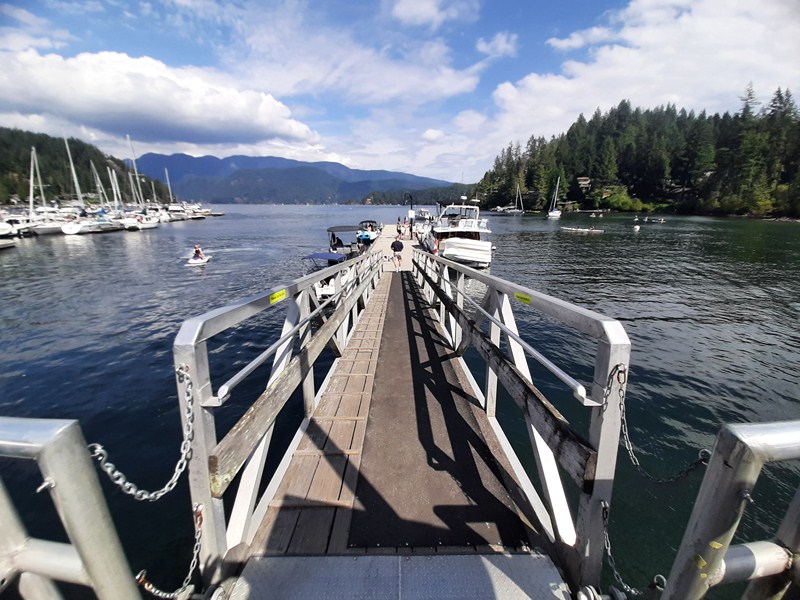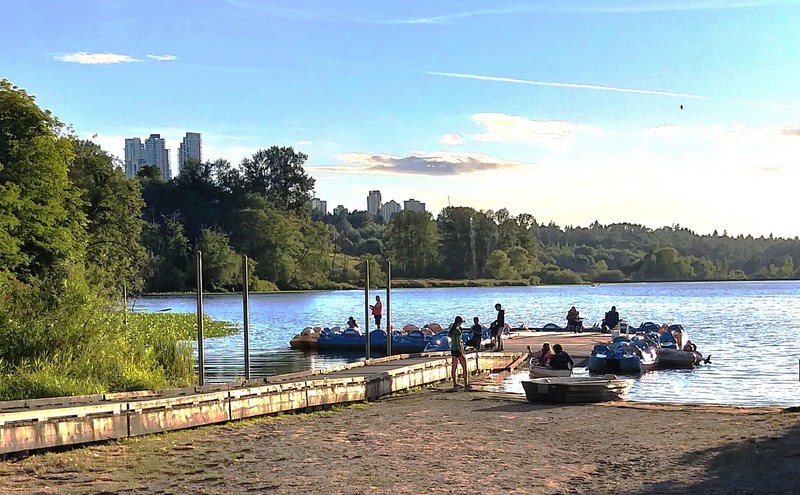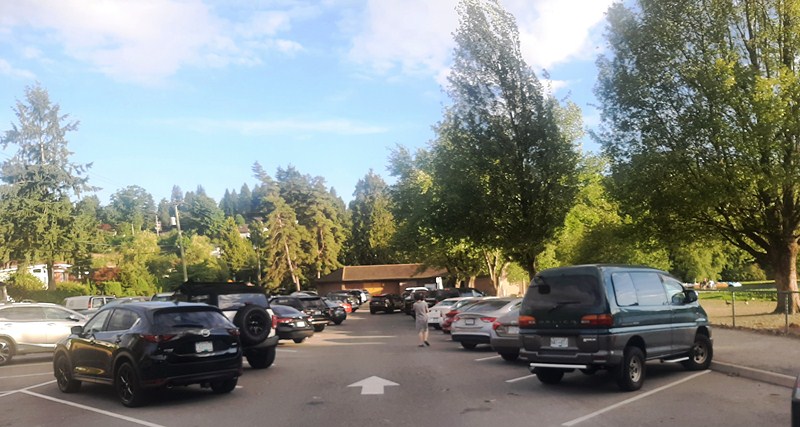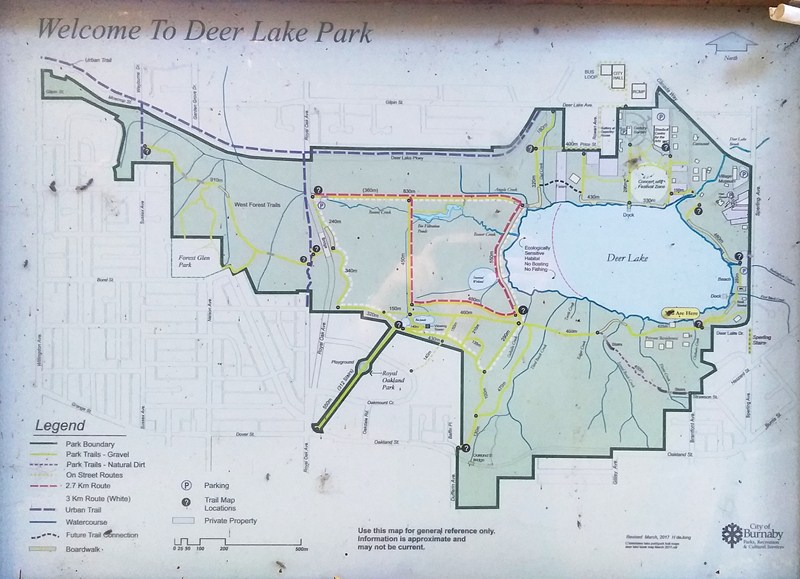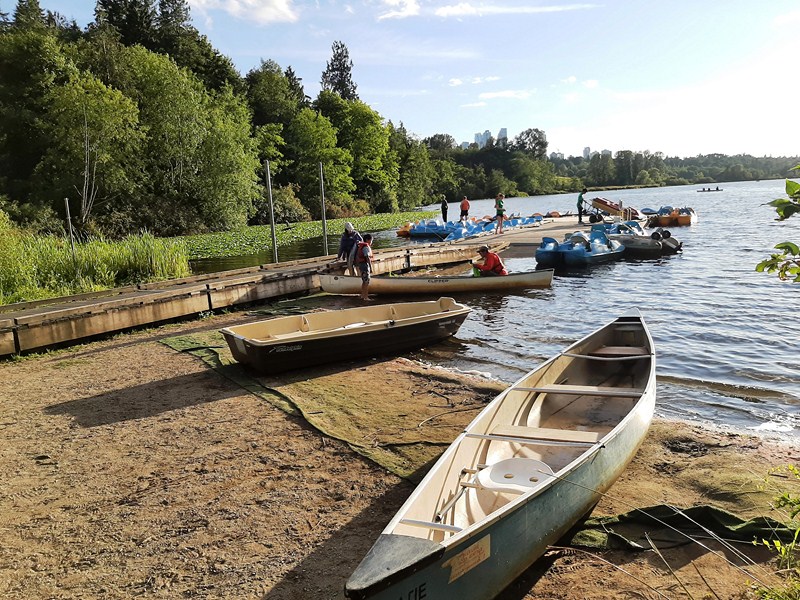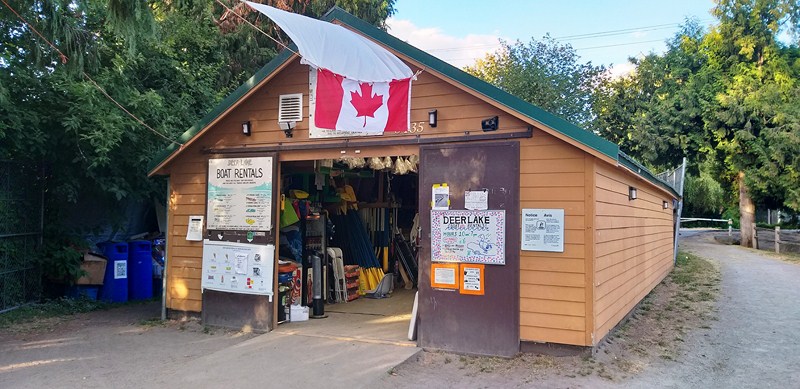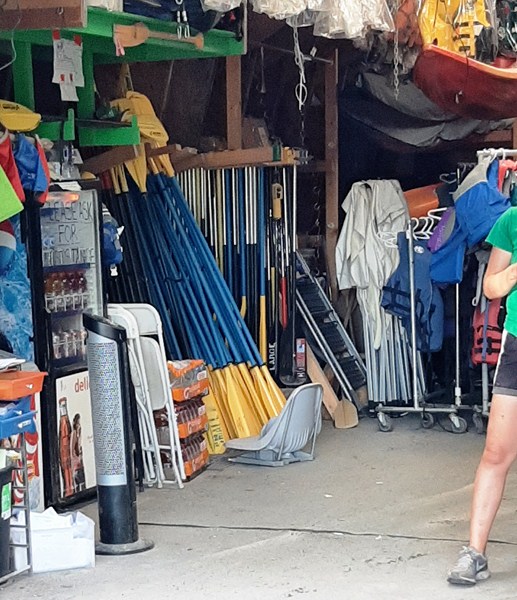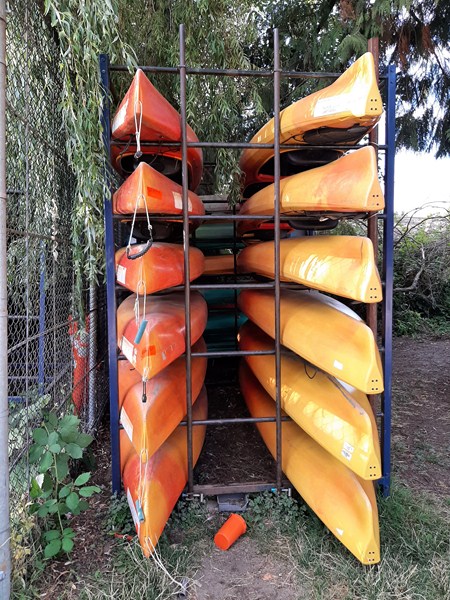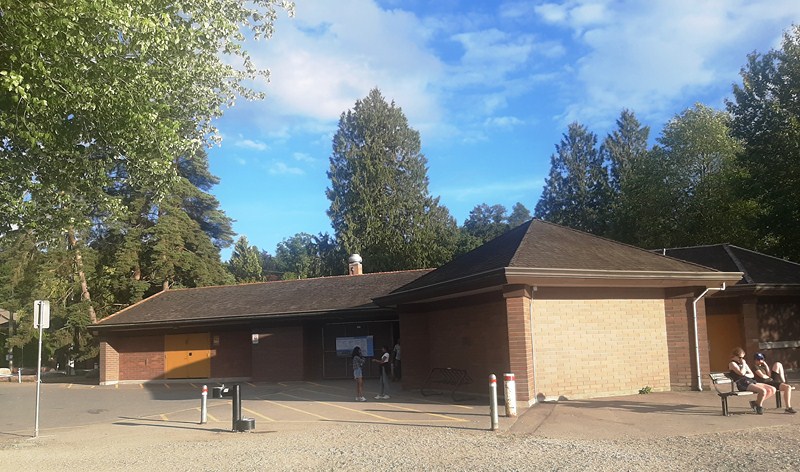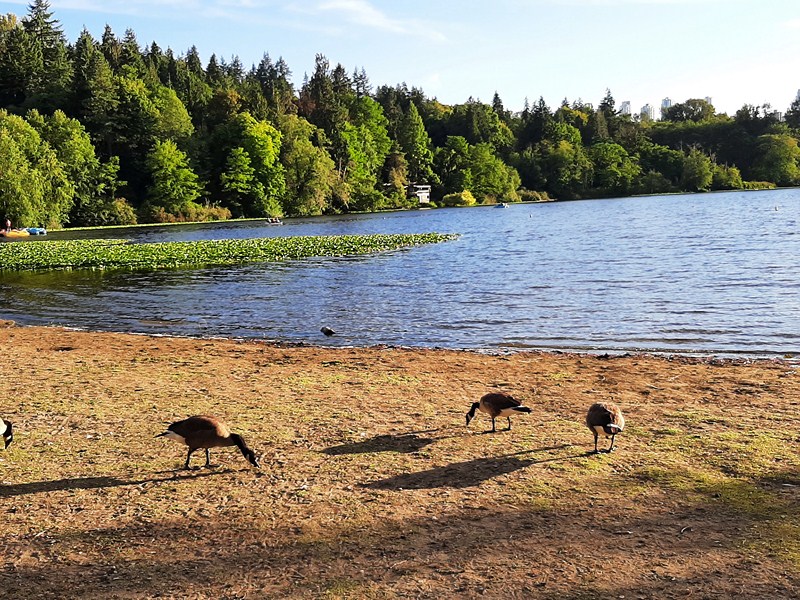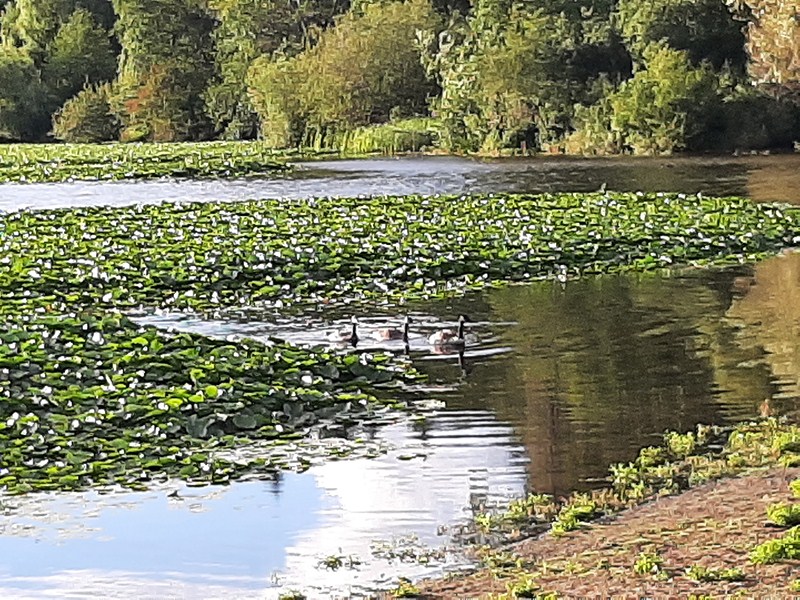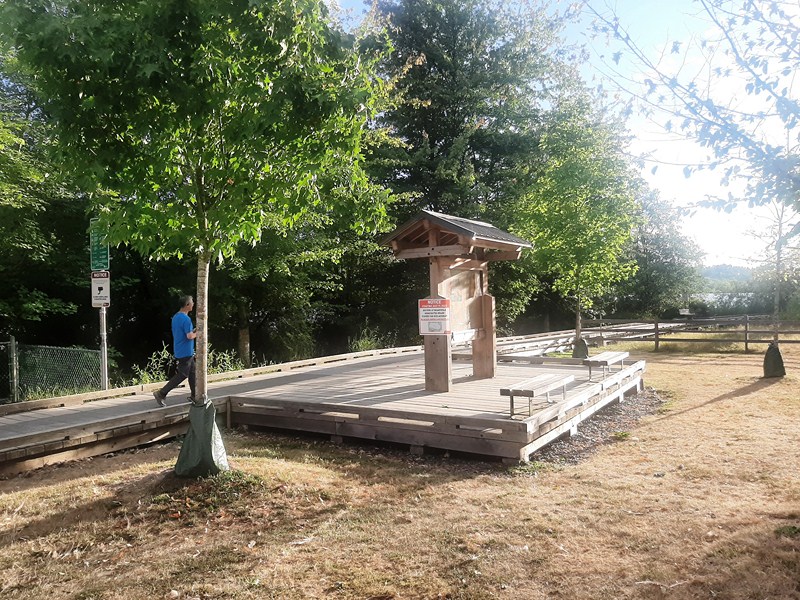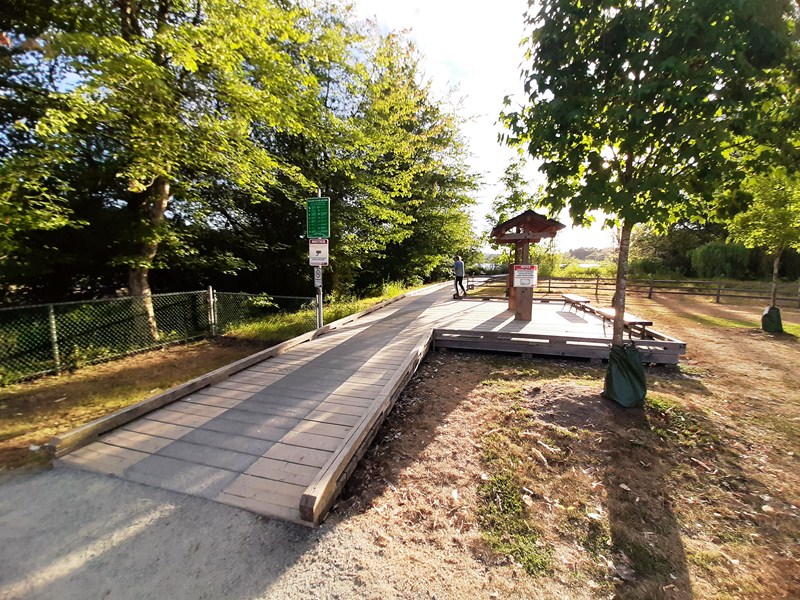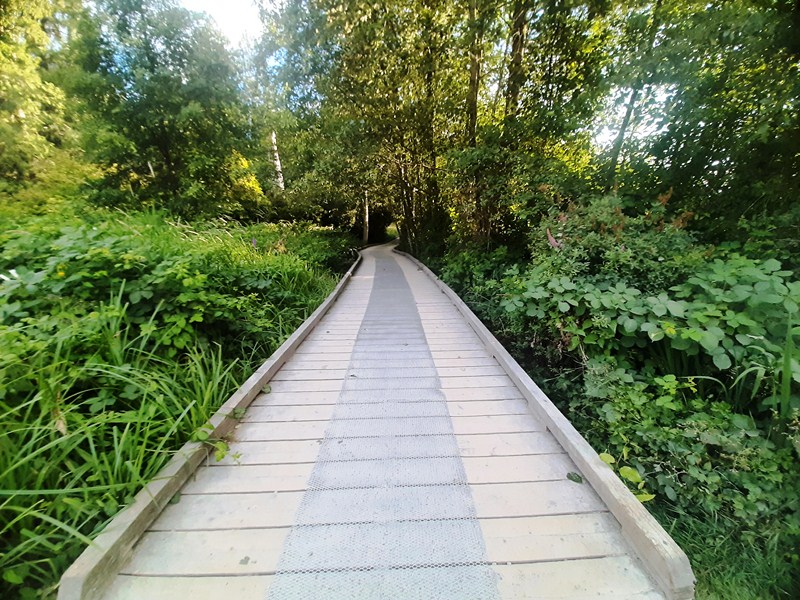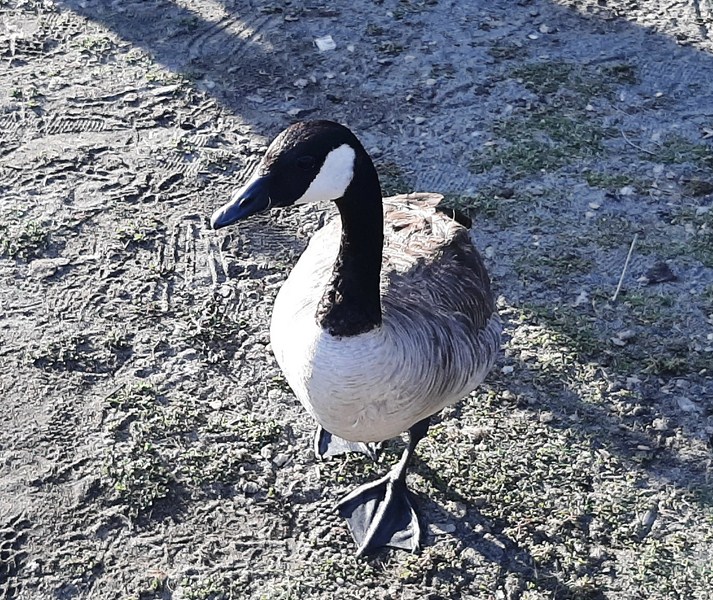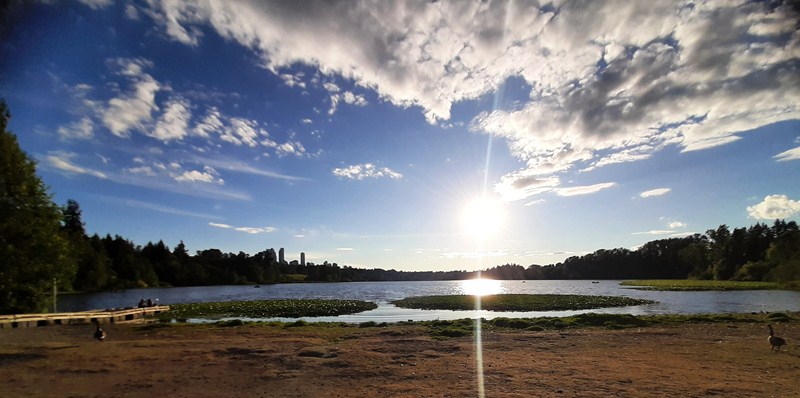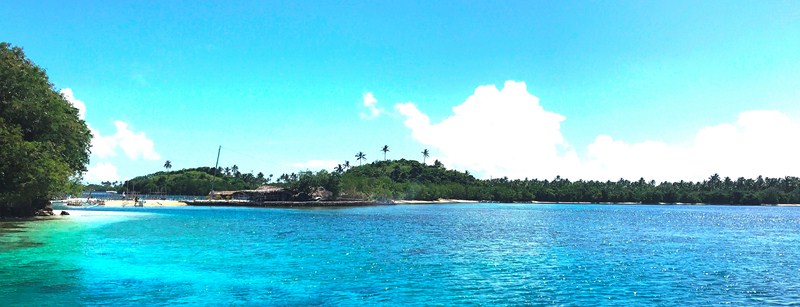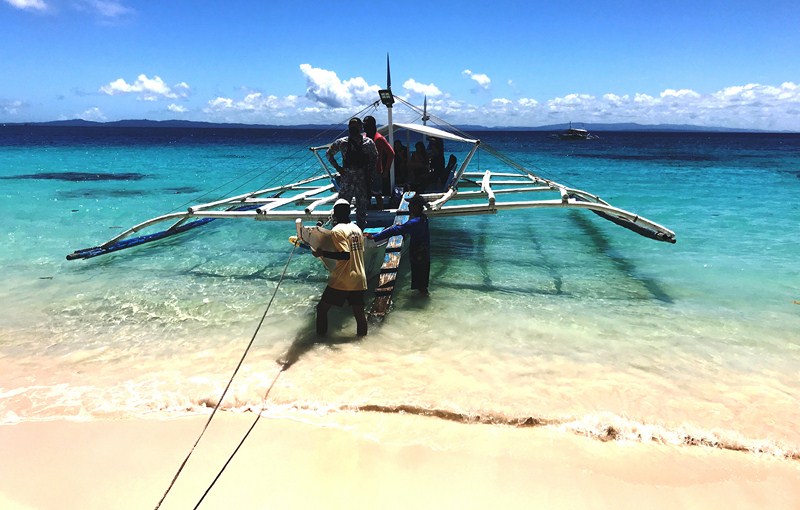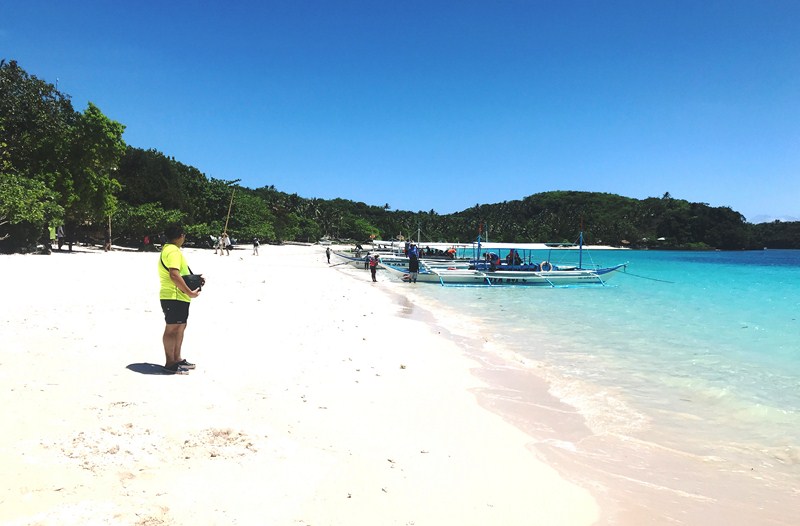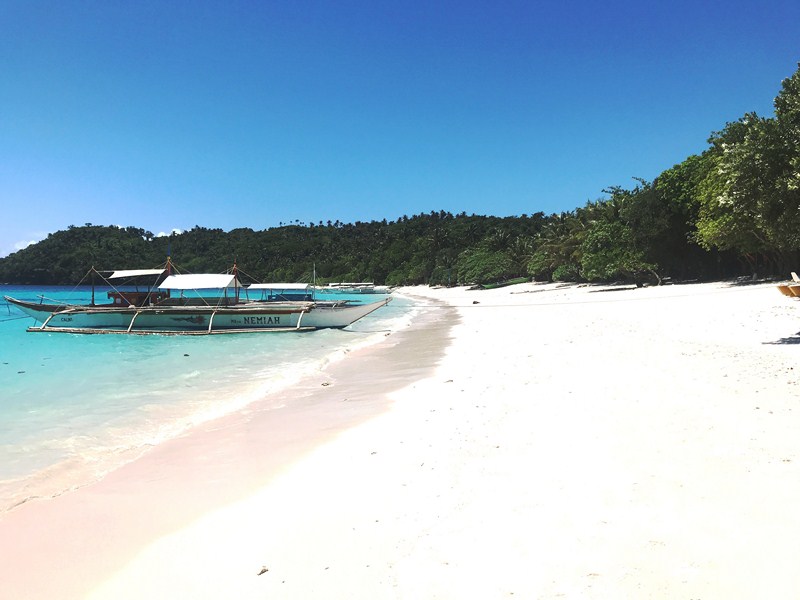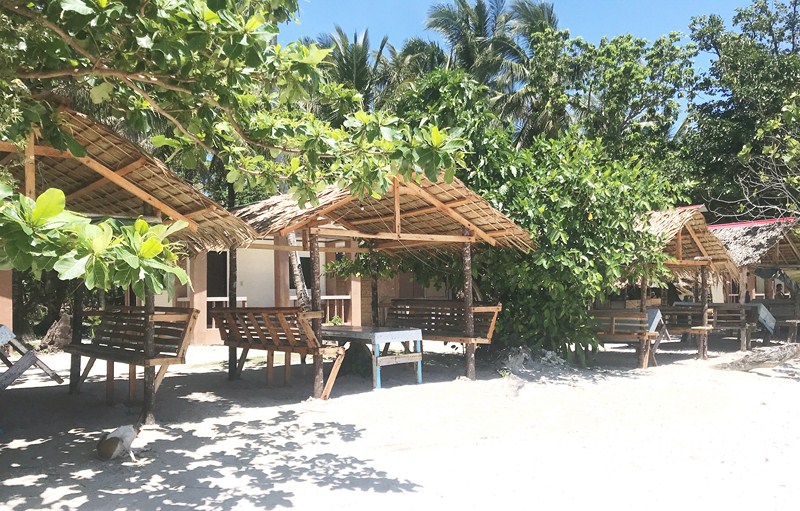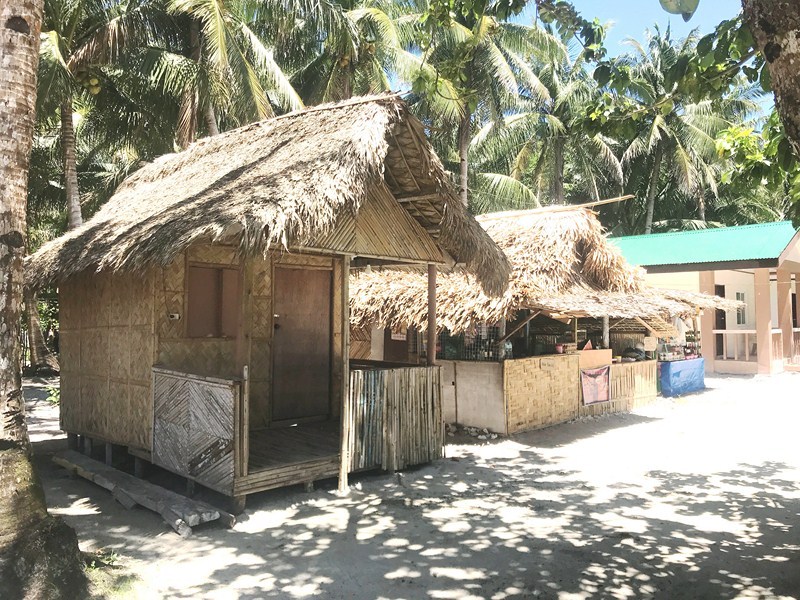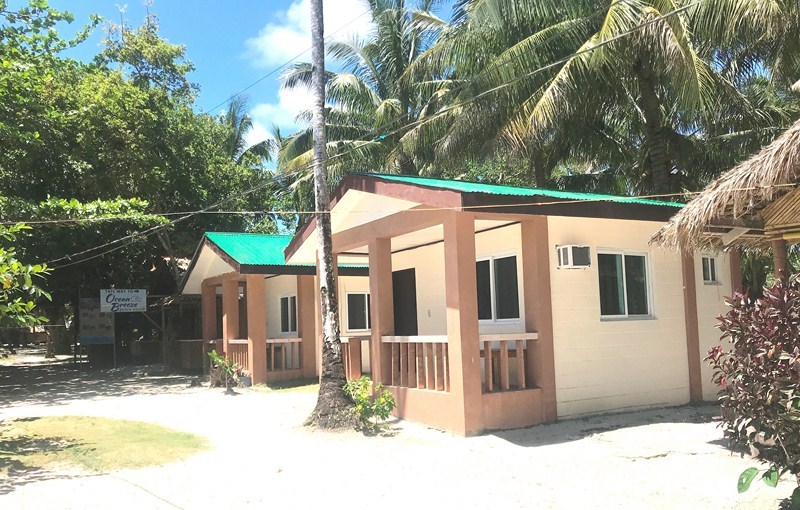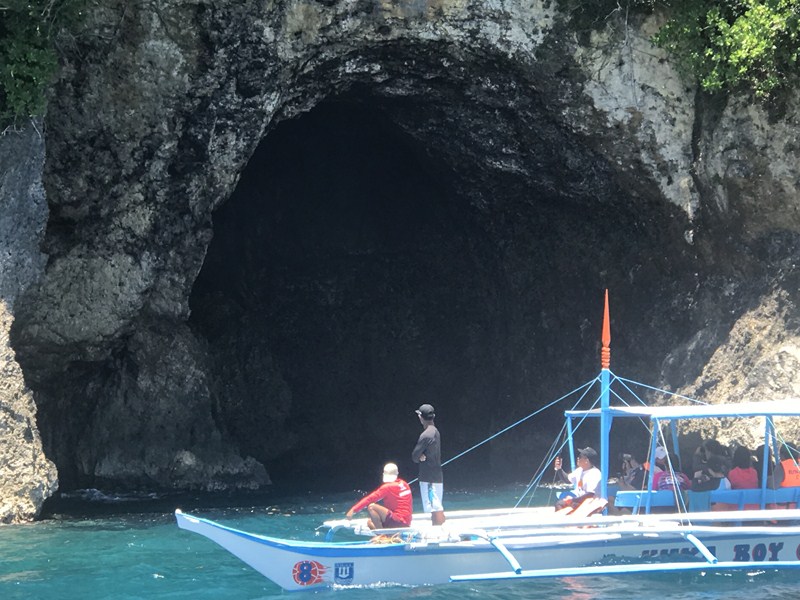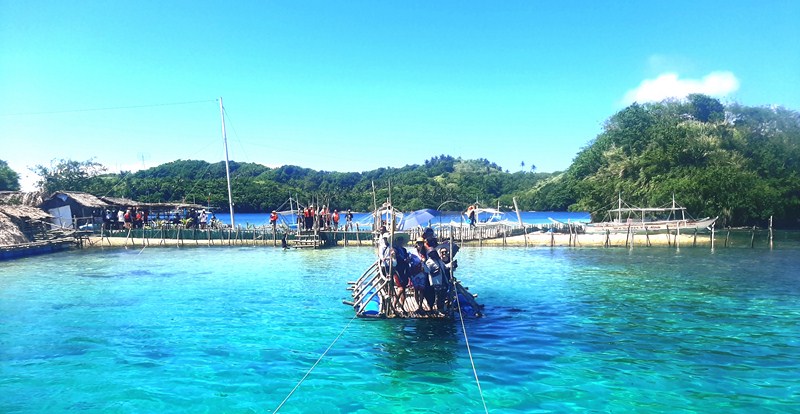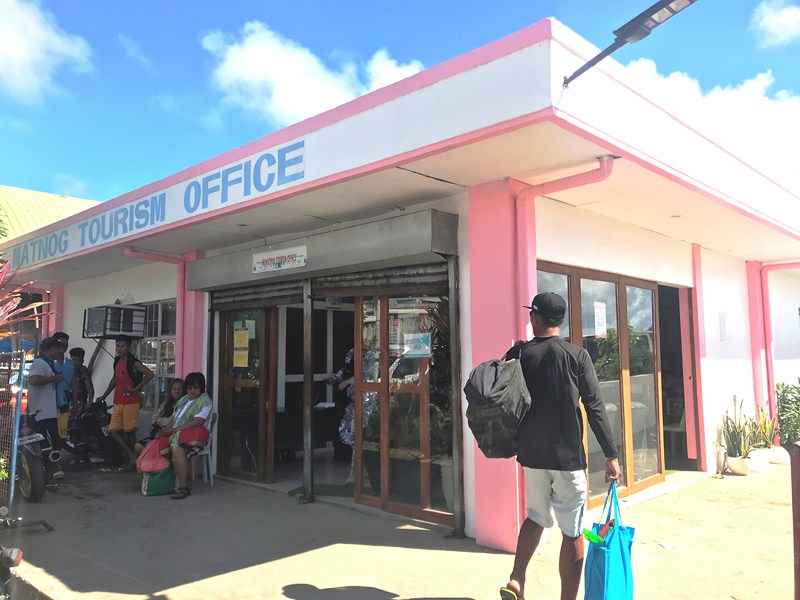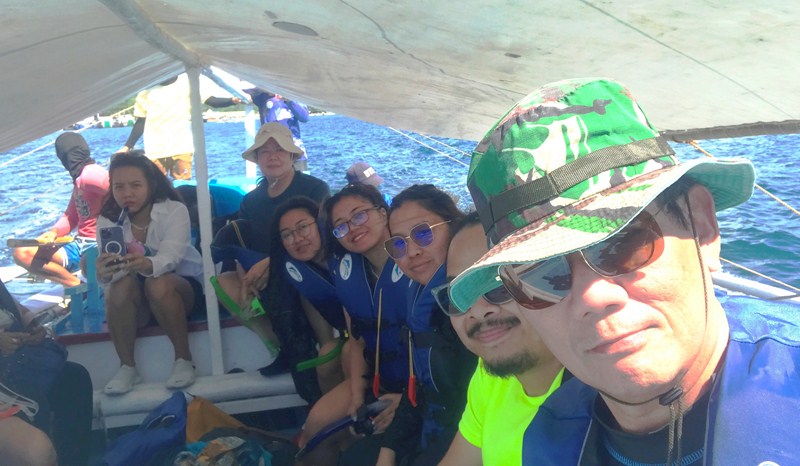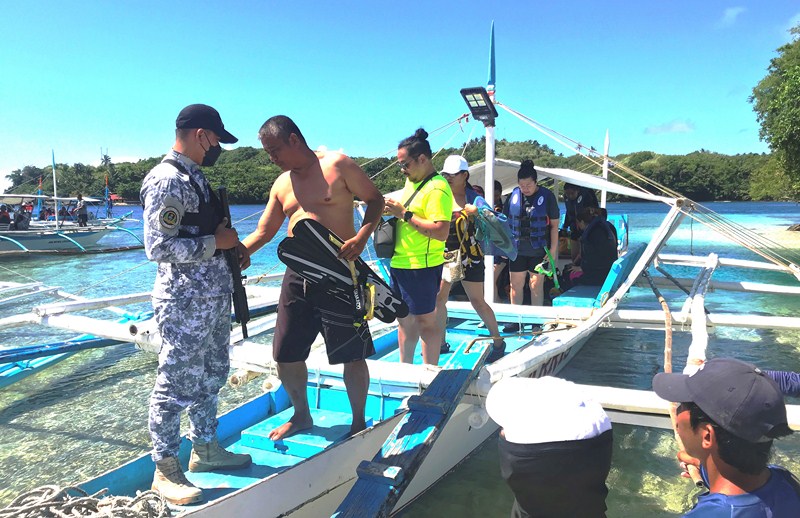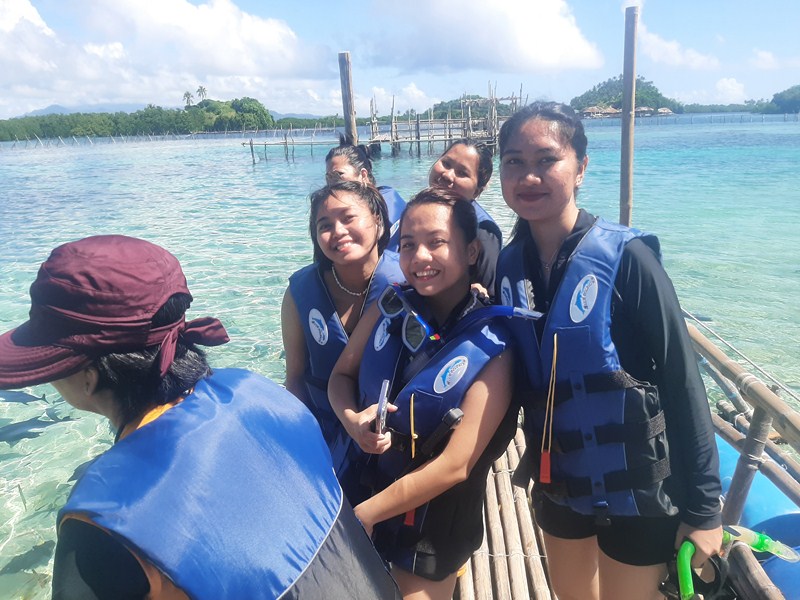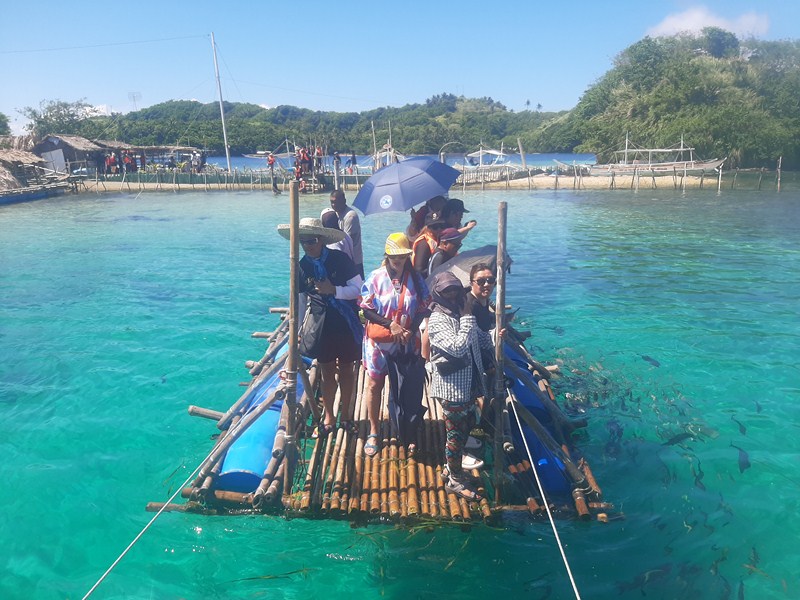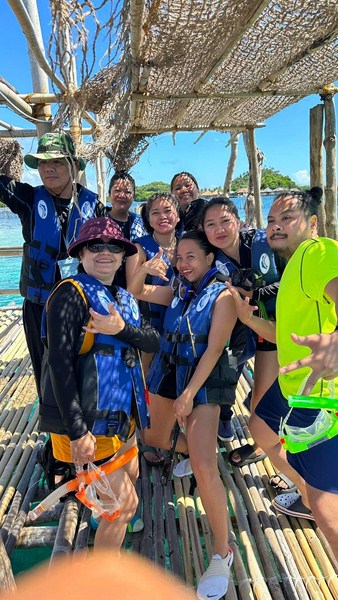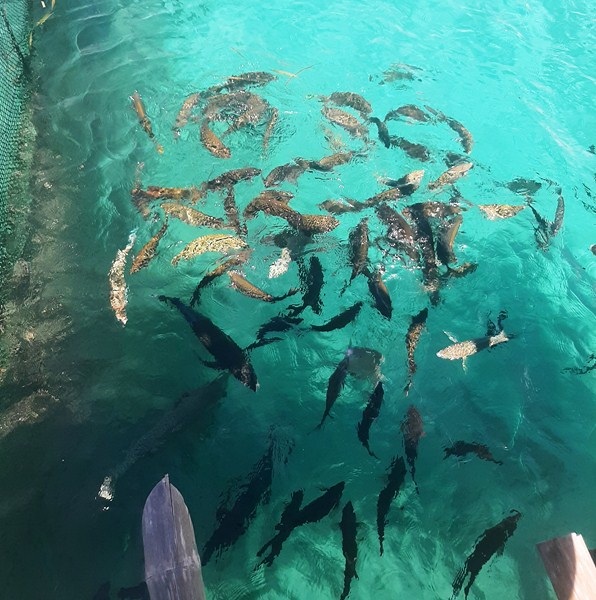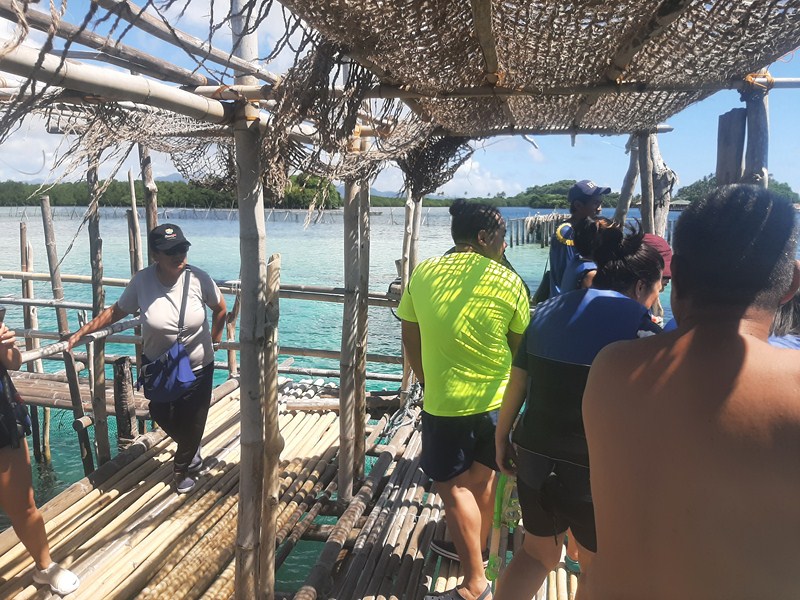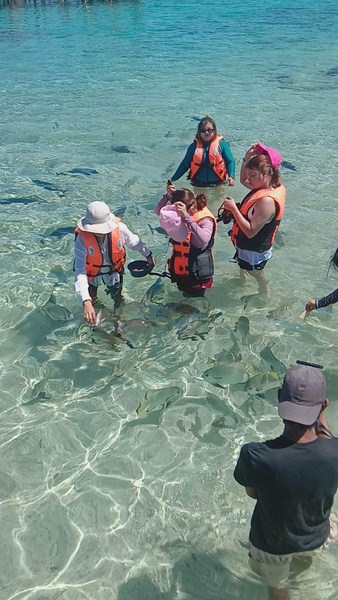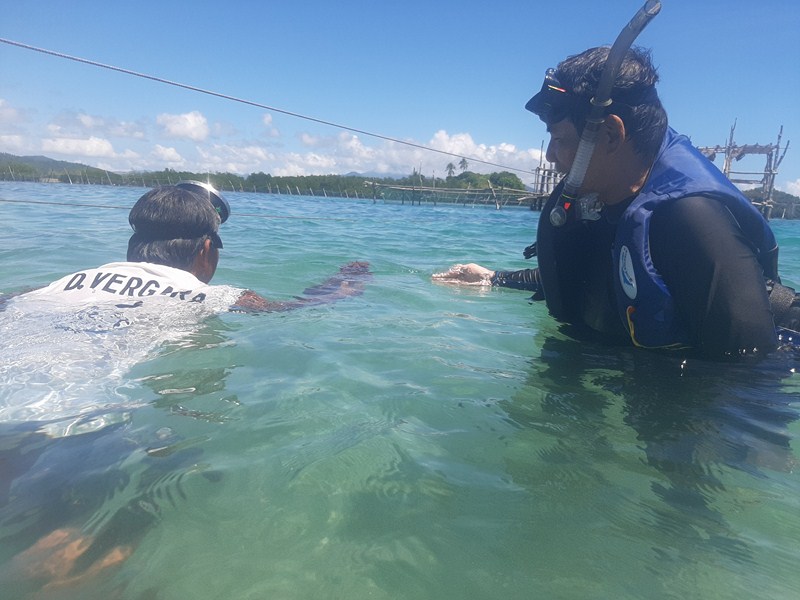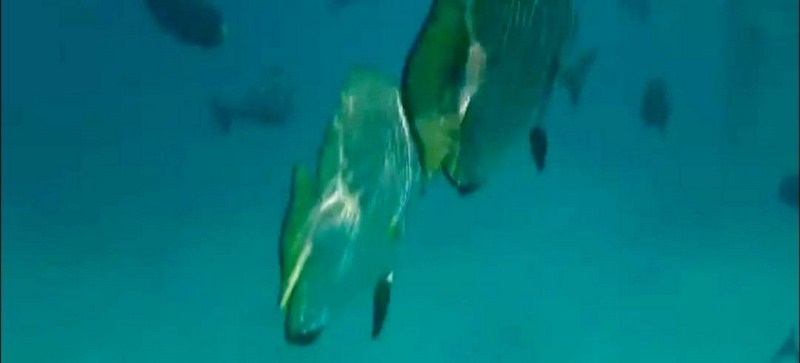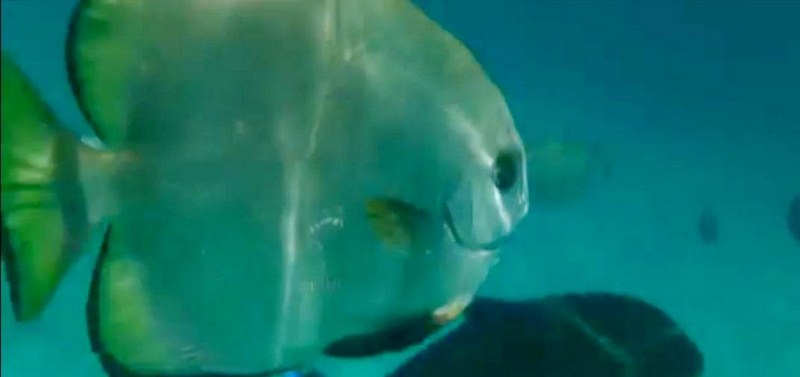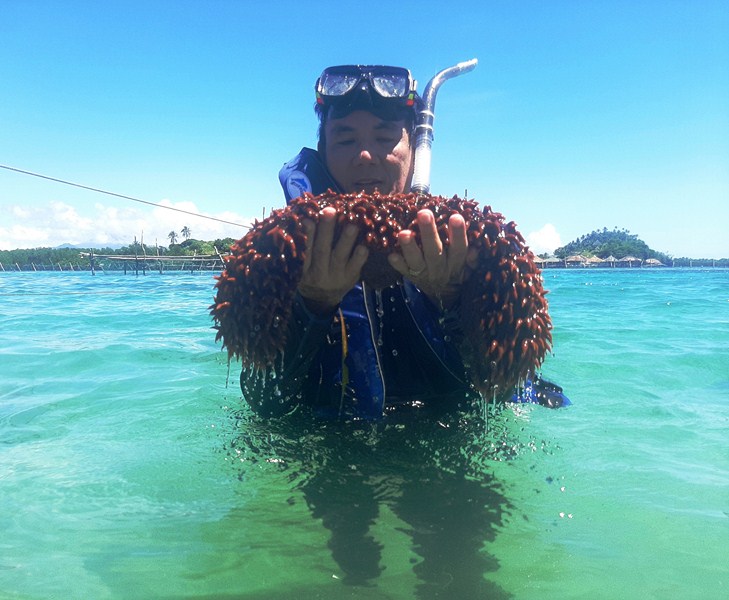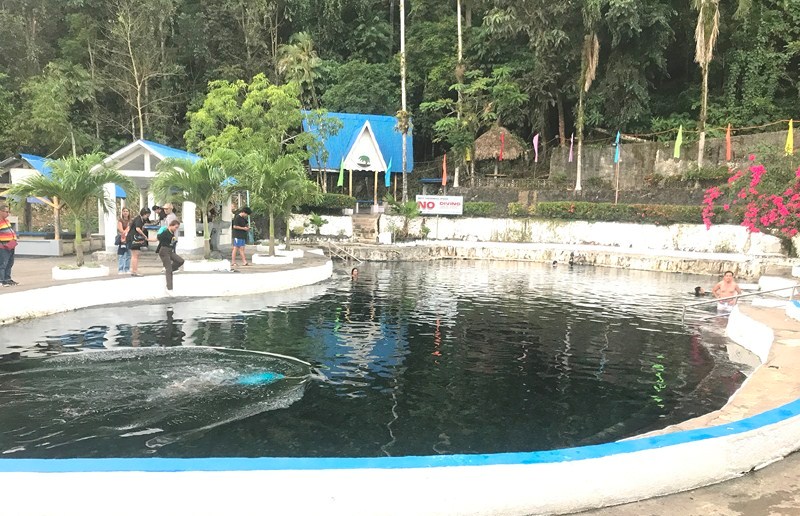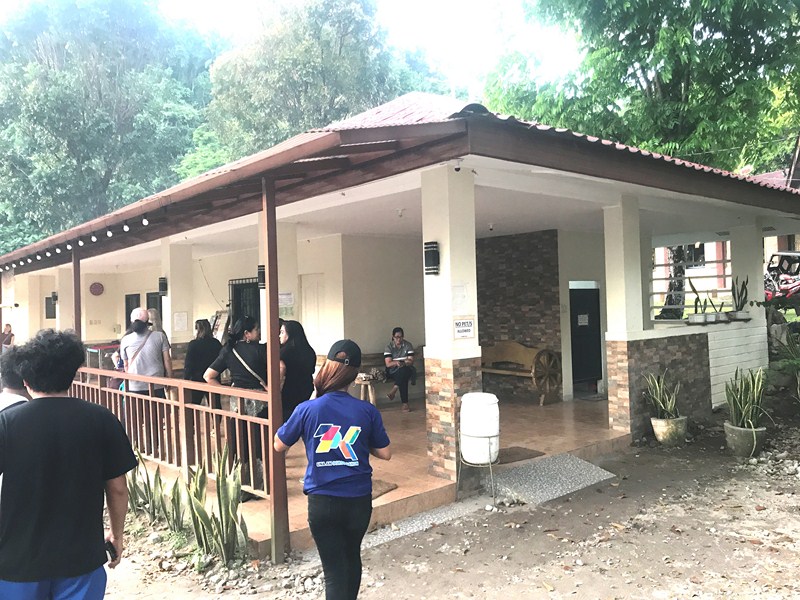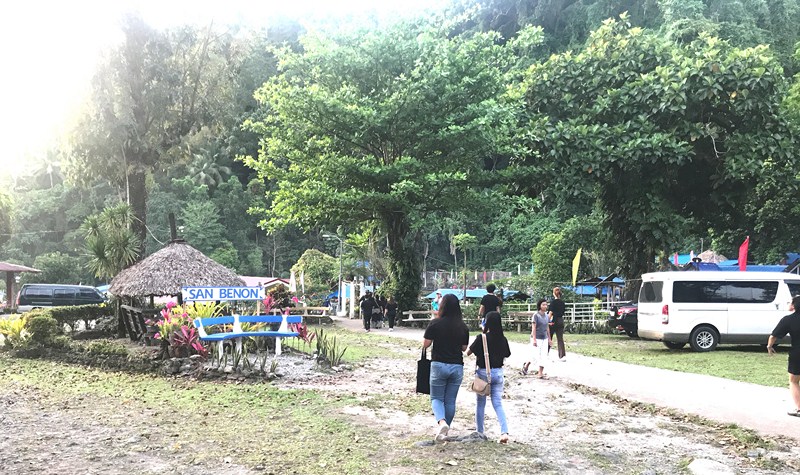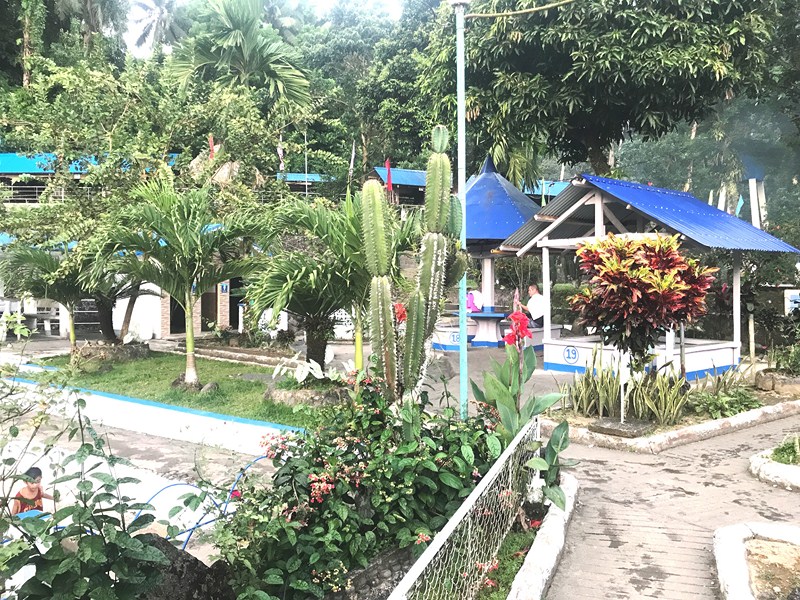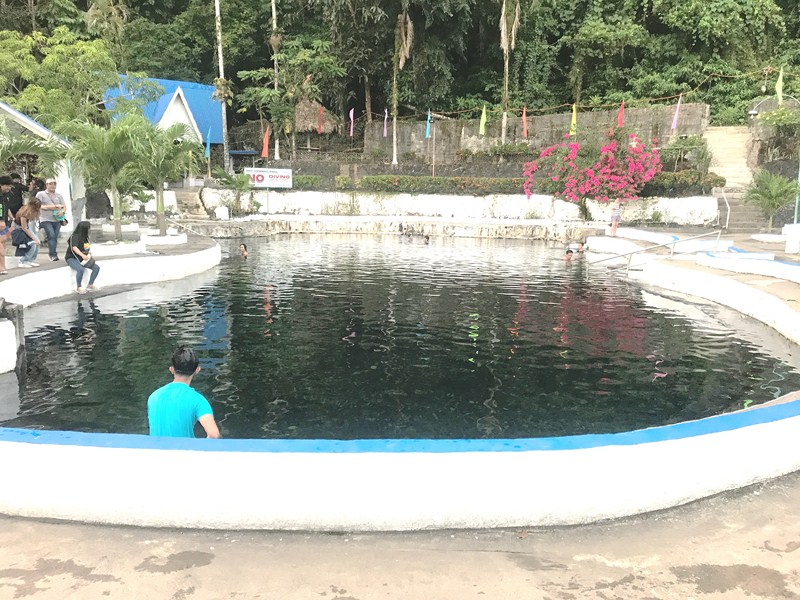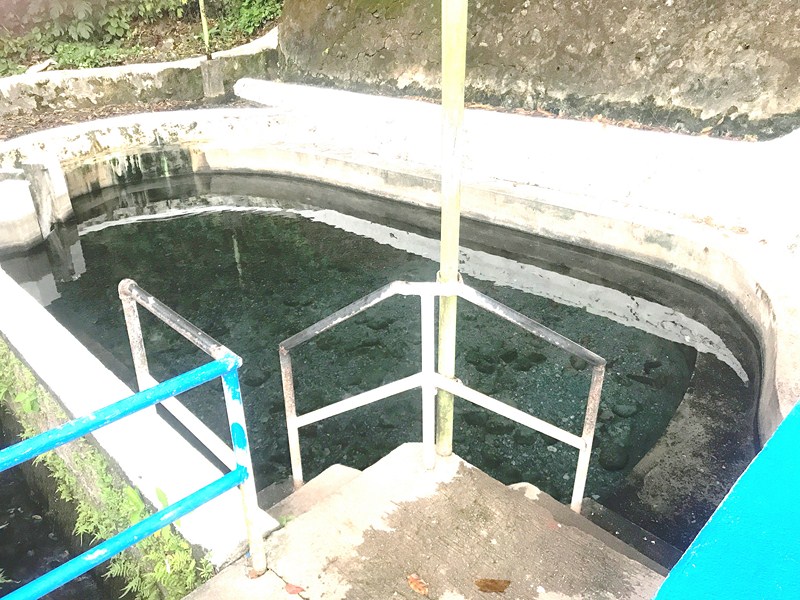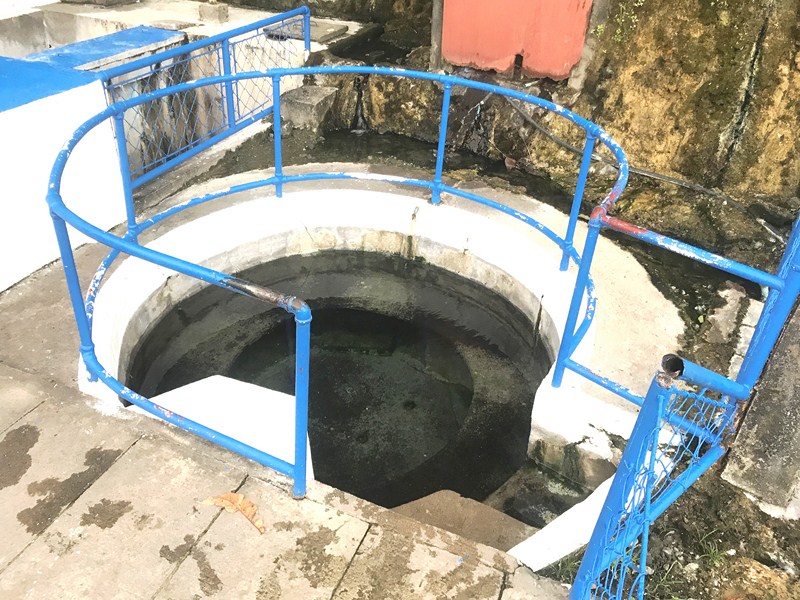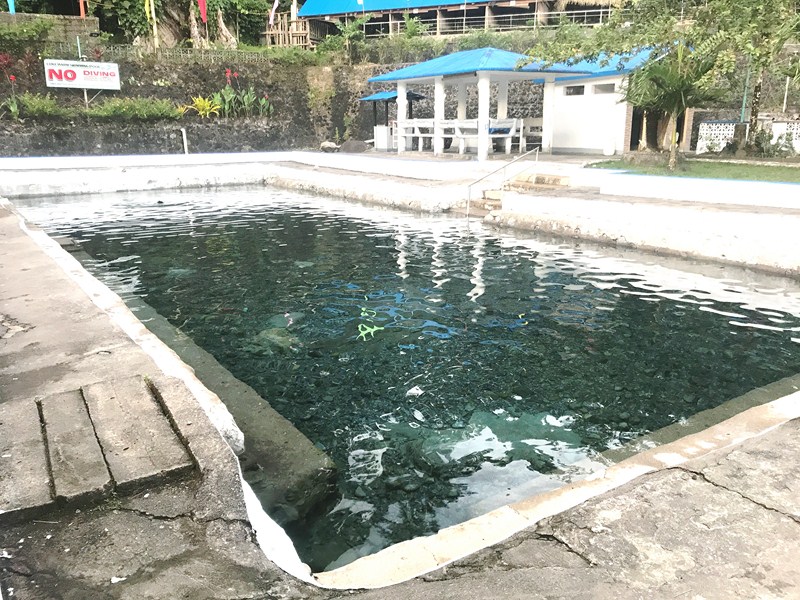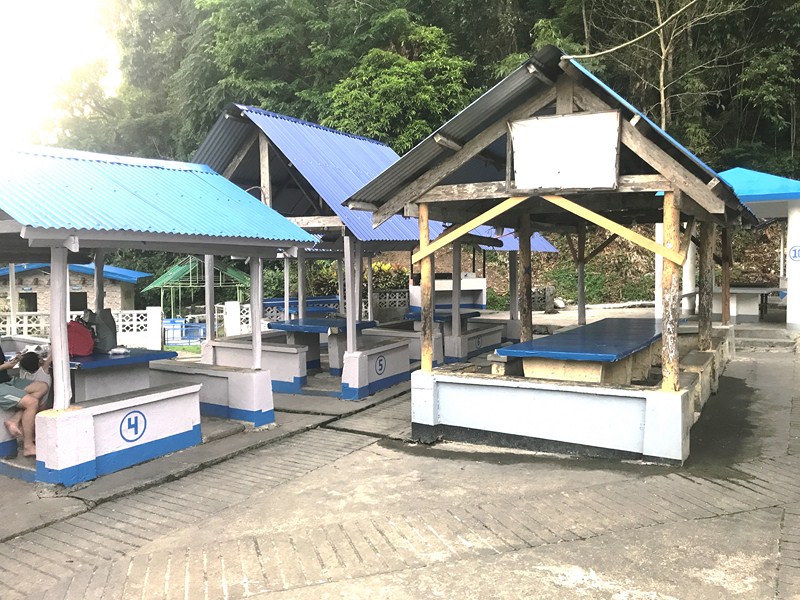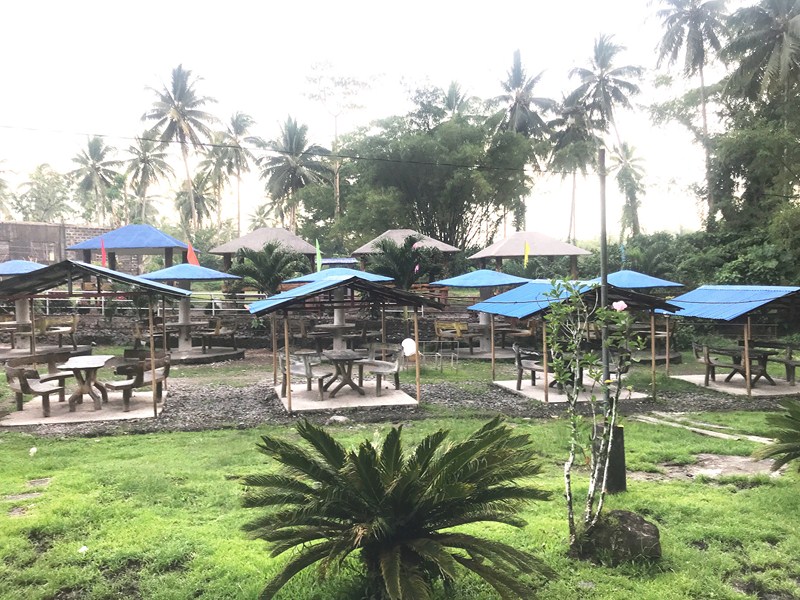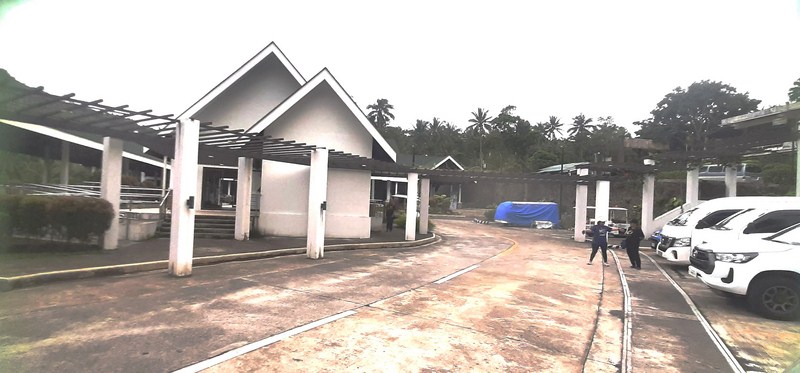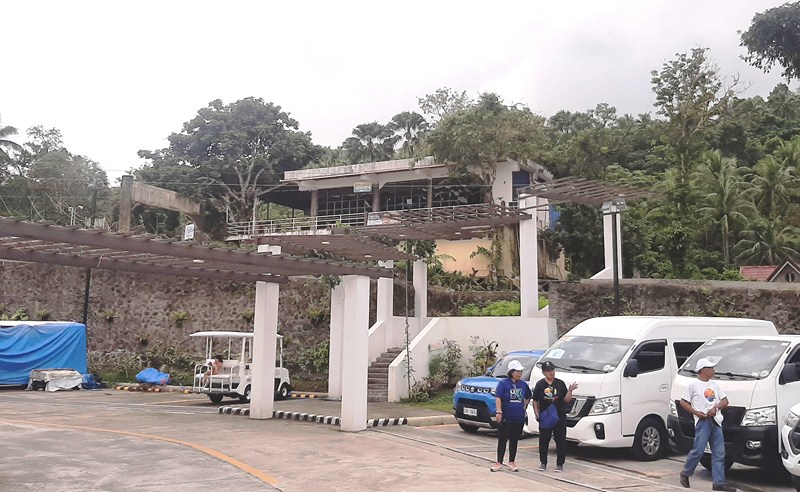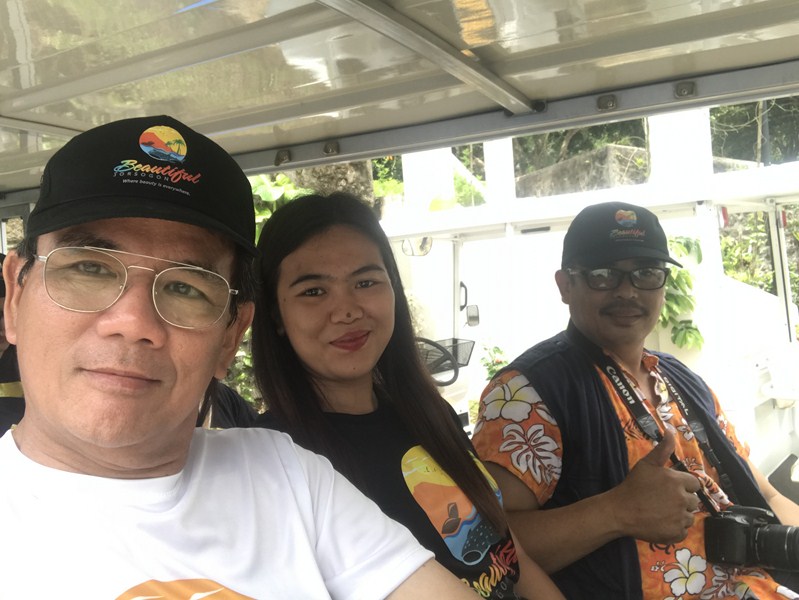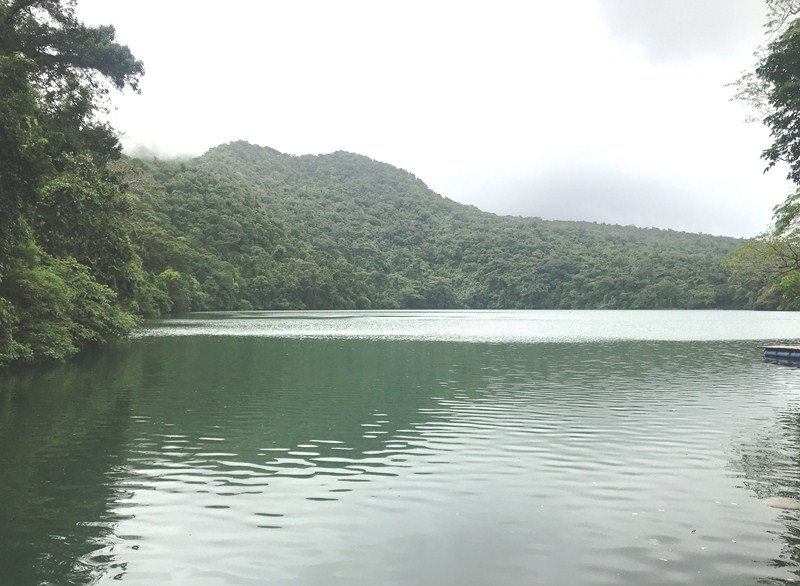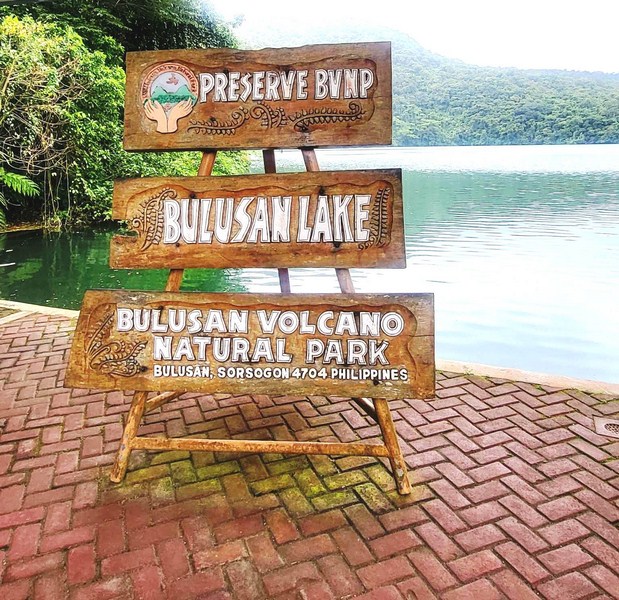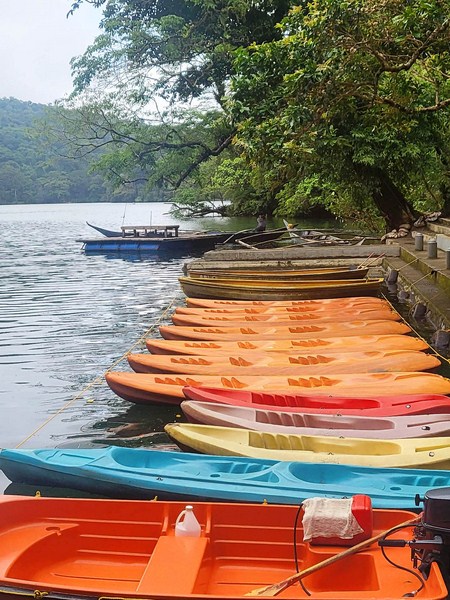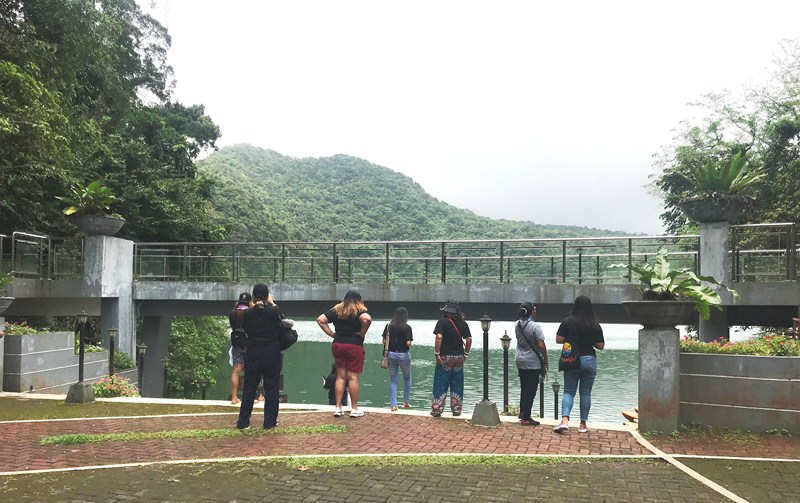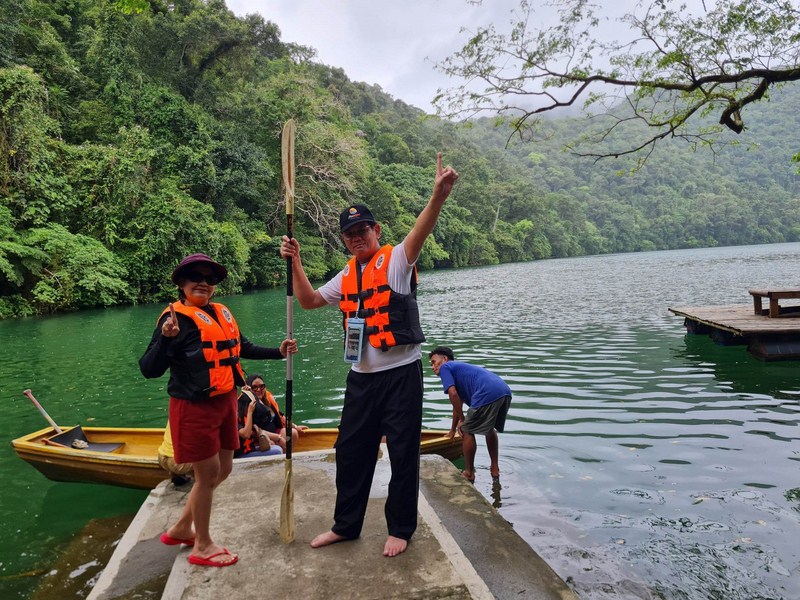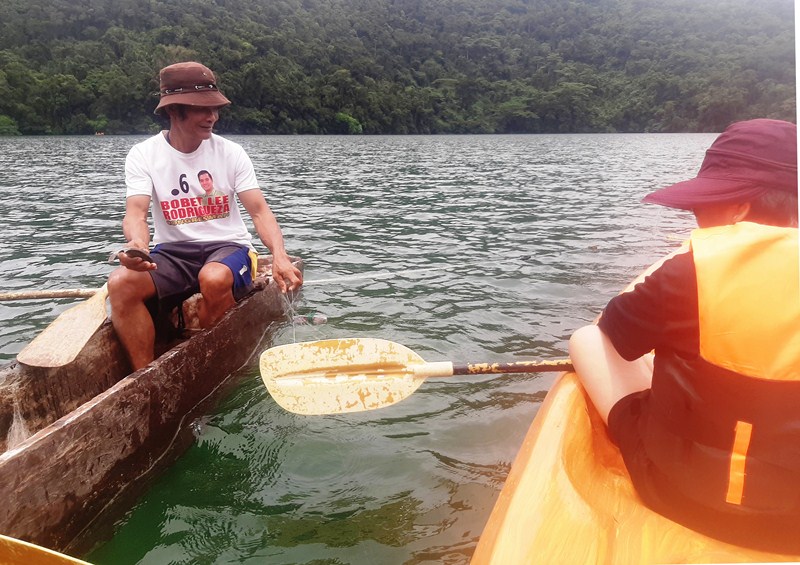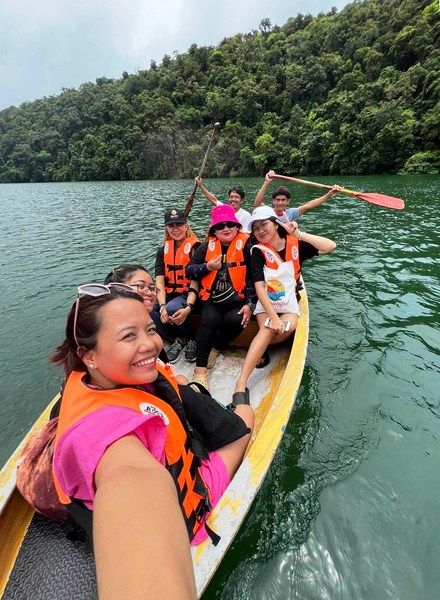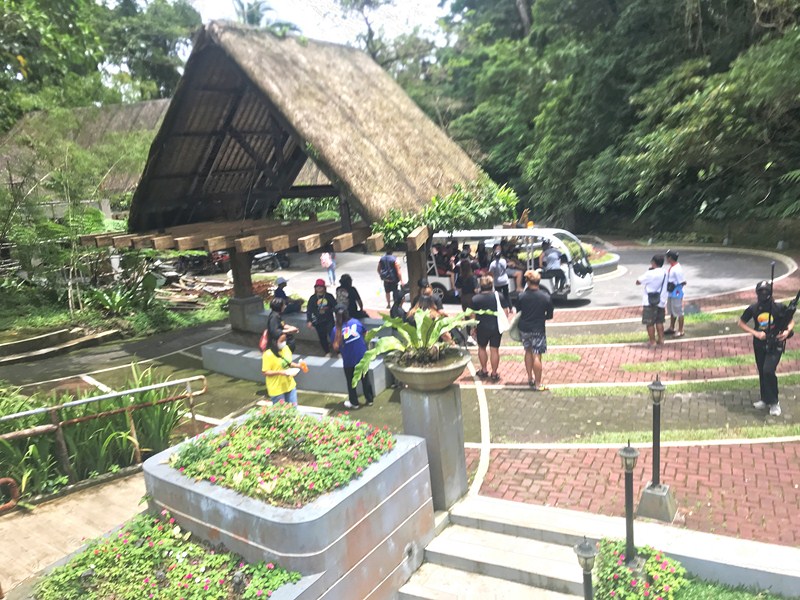From Sagittarian Agricultural Philippines, Inc., it was just a short 4.7-km. (6-min.) drive to the the 200-hectare Ilagan Sanctuary which we were to explore and have lunch.
Check out “Sagittarian Agricultural Philippines, Inc.”
Part of 819-hectare Fuyot Springs National Park (which extends from the City of Ilagan to Tumauini), it is the most visited spot in the City of Ilagan. Located along the foothills of the Sierra Madre mountain range, it was developed in 2004 and offers every ecotourism activity imaginable.
Most of these developments were completed in the early 2009 through the initiative of Ilagan Mayor Jose Marie L. Diaz.
Under the program, 28 locally-based, non-government organizations signed a memorandum of agreement, where they pledged to take responsibility for the sanctuary’s protection, maintenance and preservation.
Other government and national agencies were also rallied to help with the place’s conservation.
At the parking area, located just outside the gate, we proceeded to the pavilion near Serenity Hill Calvary (Prayer Mountain), with its serene views and peaceful surroundings. Serenity Hill has 14 Stations of the Cross, a Grotto of the Virgin Mary, a giant steel cross and a large rosary, made of concrete, laid on the grass.
It also has places of worship such as a quaint chapel (Capilla de la Serenidad) for Catholics, a mosque for Muslims and an ornate temple offering a glimpse into traditions and beliefs of Chinese Buddhists.
Other attractions inside the Ilagan Sanctuary include a number of natural parks (Willow Brookside Park, Scented Gardens Park, Rain Forest Park and Hidden Springs Falls Park), Butterfly Park, Animal Kingdom (a mini zoo), fish pond (with Nile tilapia), swimming pools, picnic huts, Sta. Victoria Caves and a natural spring pool.
Aside from these things, the sanctuary also offers an environmental school (where you can listen to lectures, receive certificates and get seedlings to plant), a botanical garden and a herbal plantation.
Members of our media group tried out a number of the activities offered. Azrael, Cris, Mia and photographers John and George, and I tried out the Tree Top Adventure and did some spelunking at Sta. Victoria Caves; Nicole tried out horseback riding within a horse trail; Lea and Minerva braved the bike zip at the boating area, beside the swimming pool; and Rosary, Elvira, Amadis, Ann, Mich, Roel and Minerva did some sightseeing on board a cable car.
After spelunking, Azrael and Mia cooled off at the swimming pool while Minerva, George and John went go carting. After all these activities, we had our lunch, al fresco style, at picnic tables near the fish pond.
Check out “Ilagan Sanctuary: Tree Top Adventure and Sta. Victoria Caves”
Other activities inside the sanctuary include bird viewing, wall climbing & rappelling on a 50-ft. high wall, boating or kayaking (in a man-made lake), ziplining, and biking. Some activities in the sanctuary will require you to ride on an all-terrain vehicle (ATV) at a clearing, at the edge of the park. A 1.5-km. hike, open for guests, to Pinzal Falls, takes about half an hour.
Two 350 m. long, 700 ft. high, thrilling ziplines, said to be the fastest (you travel at 80 kms. per hour) in the country, were inaugurated last May 2012 (the 326th founding anniversary of the province). You have to climb 250 steps up a hill and the ride takes about a minute long. Participants have to don a helmet and harness.
Animal Kingdom, a zoo, houses a variety of animals such as two Bengal tigers (brought here when they were cubs), wild boar (locally called alingo), ostriches, exotic birds, an eagle, graceful deer, snakes, playful long-tailed macaques, an Asian palm civet (locally called mutit or musang in Ilocano), sheep and three Philippine freshwater crocodiles (Crocodylus mindorensis). A 120-kg., 17-year old female reticulated python (the world’s longest snake) named Maria Jesusa can be caressed and carried by 10 people.
For those who want to stay overnight, there’s a Family Cottage (Php4,000, for 8 pax) and a Couple Cottage (Php3,000 for 5 pax). Extra Bed is Php500/pax. You can also rent the Administration Building, with 2 airconditioned rooms, conference table, toilet and living area, for Php5,000.
Rates:
- Zipbike – Php150/pax
- Zipline and Cable Car – Php250/pax
- Horseback Riding – Php300/30 mins.
- E-Bike – Php250/30 mins.
- E-Scooter – Php250/30 mins.
- Kiddie Bikes Php150/10 mins.
- Kiddie Scooter – Php20/30 mins.
- Cable Car – Php100/pax
- Tiger Petting – Php150/pax
- Fish/Pigeon Feeding – Php10
- Bouncing Animals – Php10/30 mins.
- Swan Boat – Php200/boat for 30 mins.
- Motorized Boat – Php300/boat for 30 mins.
- Fishing Rod (red tilapia) – Php50 (unlimited time)
- Go Cart – Php150/10 mins., Php200/20 mins.
- Golf Cart – Php350/30 mins.
Packages (inclusive of entrance fee):
- All Rides – Php1,200
- Adventure Rides – Php500 (cable car, zipline, zip bike, horseback riding)
- Water Adventure – Php500 (swan boat, motorized boat)
- Land Rides – Php600 (E-Bike, E-Scooter, Golf Cart, Go Cart)
Rental Fees:
- Gazebo (2 x 2 m.) – Php200
- Gazebo (2.5 5 m.) – Php250
- Gazebo (2 x 3 m.) – Php300
- Gazebo (3 x 3 m.) – Php500
- Bulwagan (near zipline are) – Php3,000
- Pavilion(near Prayer Mountain) – Php3,000
- Sound System – Php2,000
- Tables – Php60/piece
- Chairs – Php20/piece
- Exclusive use of Children’s Playground – Php4,000
- Function Hall (near Children’s Playground) – Php3,000/day
Filming Fees
- Movie/Video Documentary – Php3,000 (8 hours)
- Pictorial (Rentals) – Php1,500 (pre-nup and other pictorials with 4-hour use of 1 cottage, additional Php100 for every succeeding hour, couple entrance is free)
Ilagan Sanctuary: Junction National Highway/Sta. Victoria Rd., Brgy. San Andres, 3300 City of Ilagan, Isabela. Open 8 AM to 6 PM (Mondays to Thursdays) and 8 AM to 10 PM (Fridays, Saturdays and Sundays). Admission: Php150 (adults), Php135 (sister municipalities), Php130 (Ilaguenos and solo parents), Php120 (senior citizens and children) and Php250 (child with guardian). The parking area is located just outside the gate and golf cart and trains brings you, from the gate, to any point in the sanctuary. A choo-choo train carries passengers from the zipline area into the Animal Kingdom, passing through flowering shrubs.
City Tourism Office: 2/F, City Hall Bldg., 3300 City of Ilagan, Isabela. Tel: (078) 624-1511. E-mail: tourism@cityofilagan.gov.ph.
City of Ilagan Tourist Information and Assistance Center: Bonifacio Park, 3300 City of Ilagan, Isabela. Tel: (078) 324-7769. E-mail: ilaganinfocenter@gmail.com.
Isabela Provincial Tourism Office: Provincial Capitol Complex, City of Ilagan, Isabela. Tel: (078) 323-3146. Mobile number: (0917) 317-3820. E-mail: isabelatourismoffice@gmail.com.
Isabela Provincial Information Office: Provincial Capitol Complex, City of Ilagan, Isabela. Tel: (078) 323-0248. Mobile number: (0927) 395-7555. E-mail: letters_info@yahoo.com.
How to Get There: The City of Ilagan is located 429.3 kms. (an 8-hour drive) from Manila and 35.5 kms. (a 1-hour drive) from Cauayan City. The park is located 9.3 kms. from the City of Ilagan. Take a ride on a northbound bus, a jeepney or a van and alight at the junction, where you can then hire a tricycle to take you to the sanctuary.


